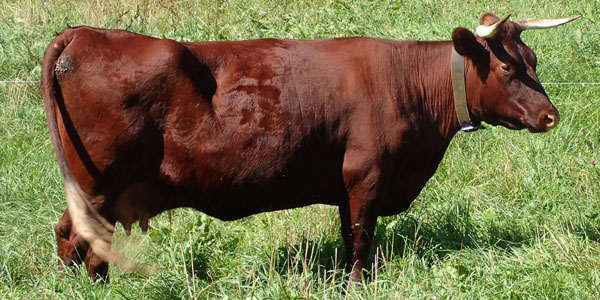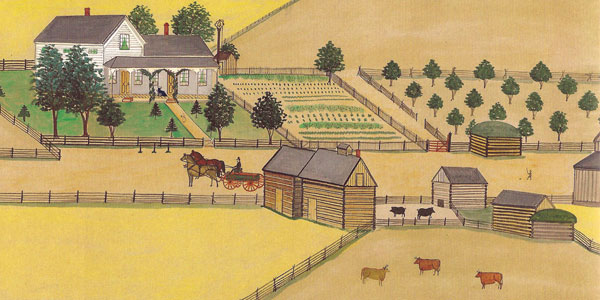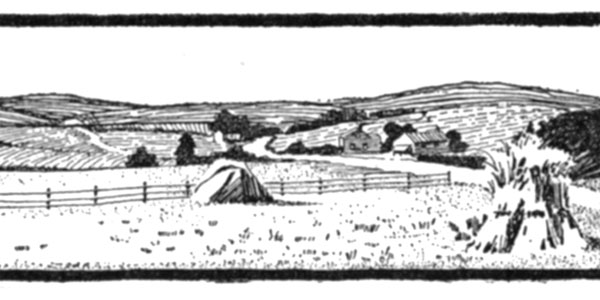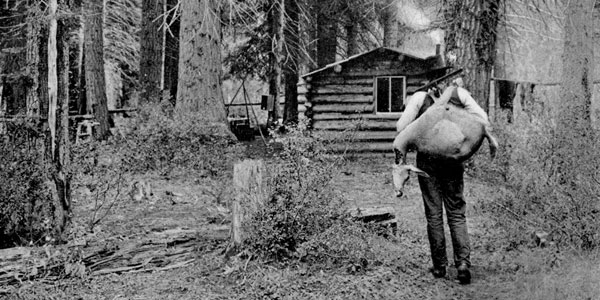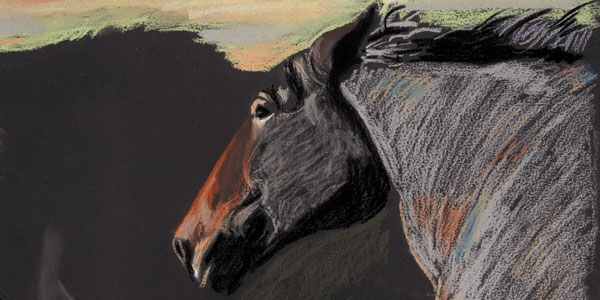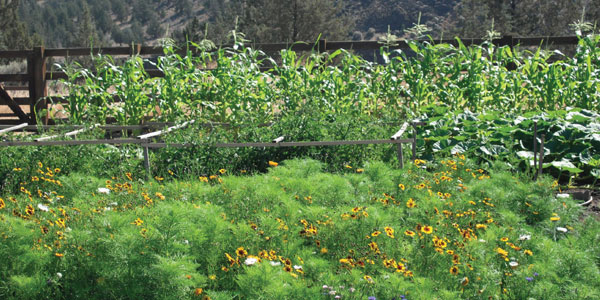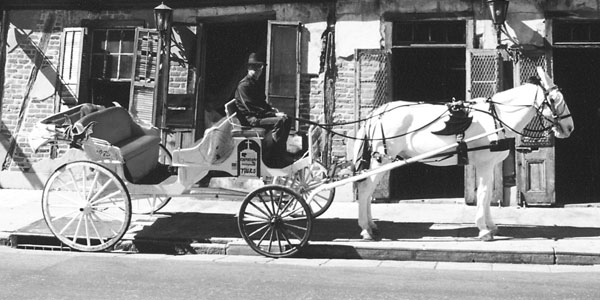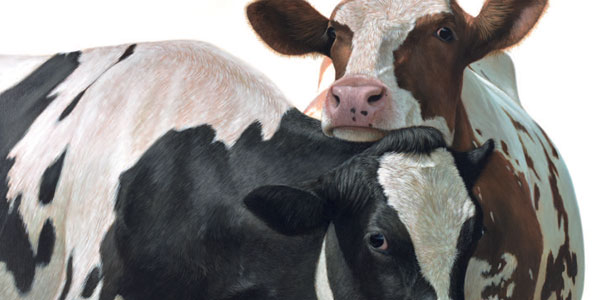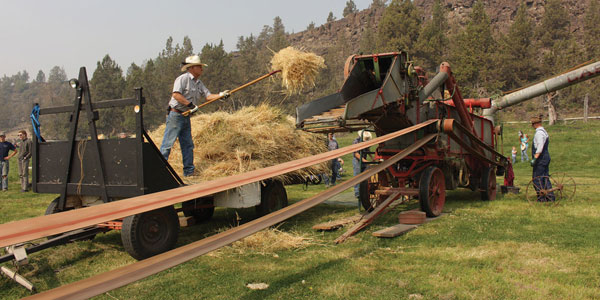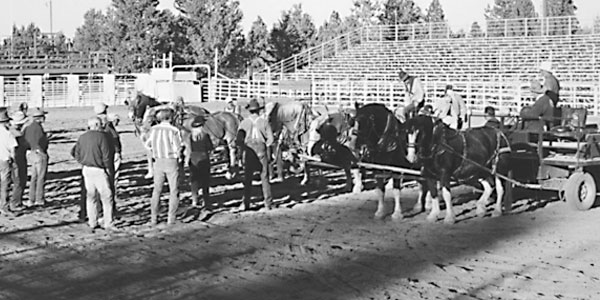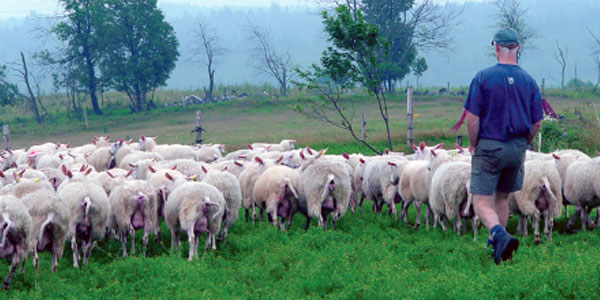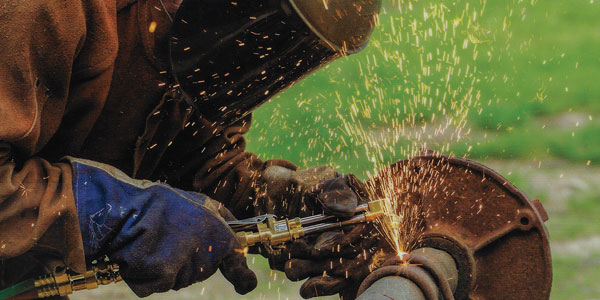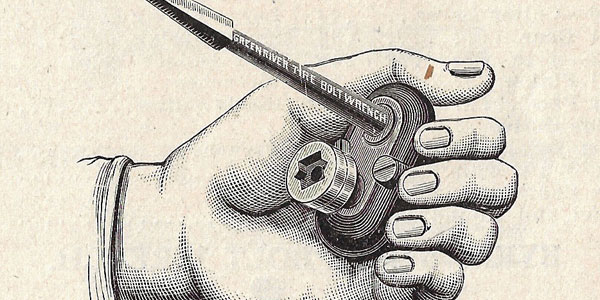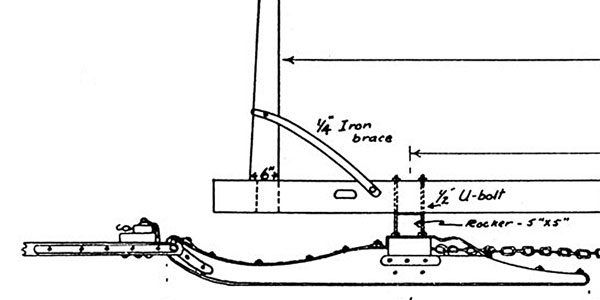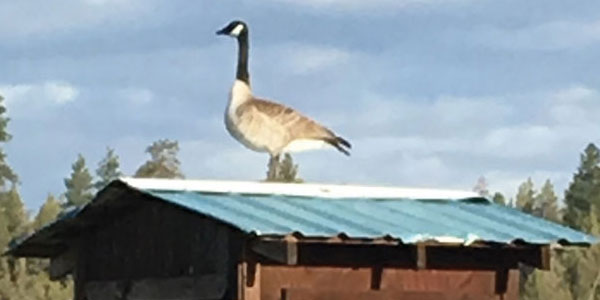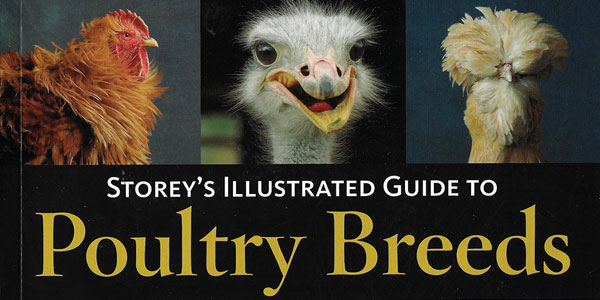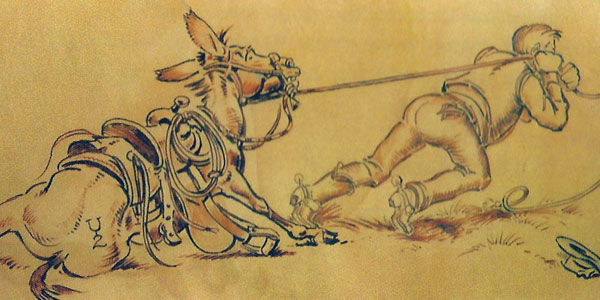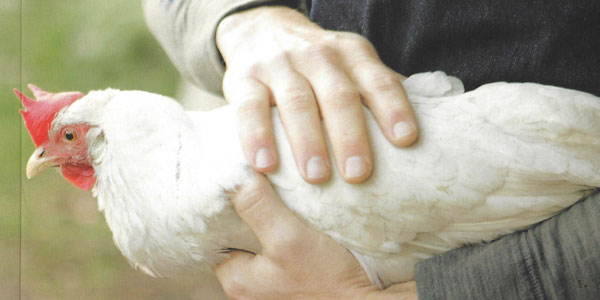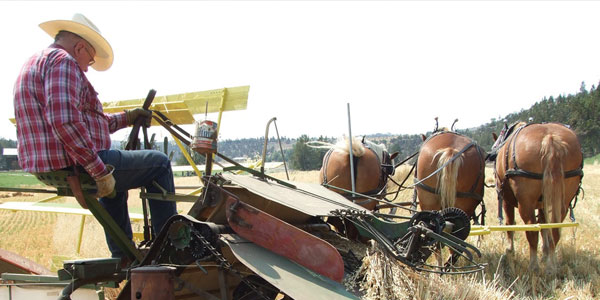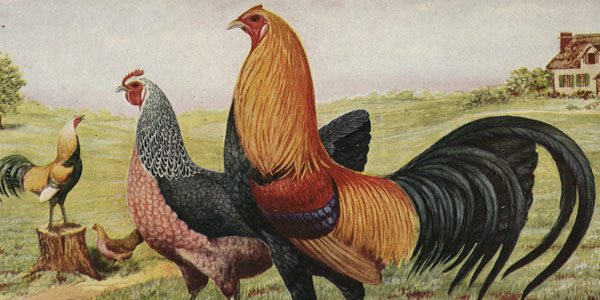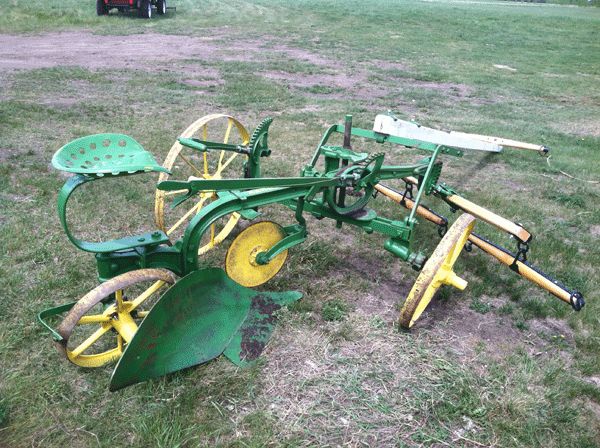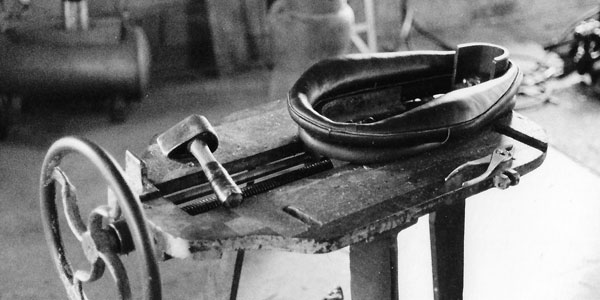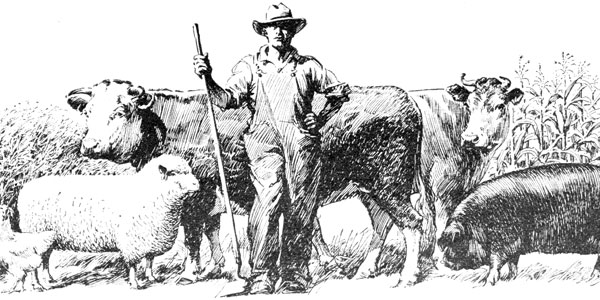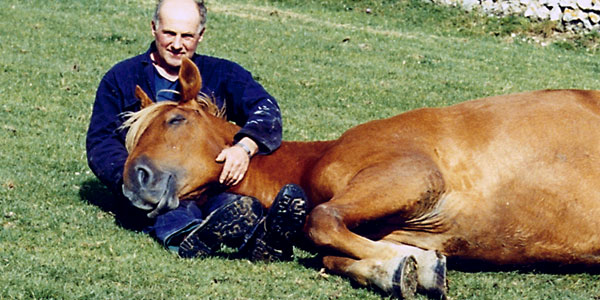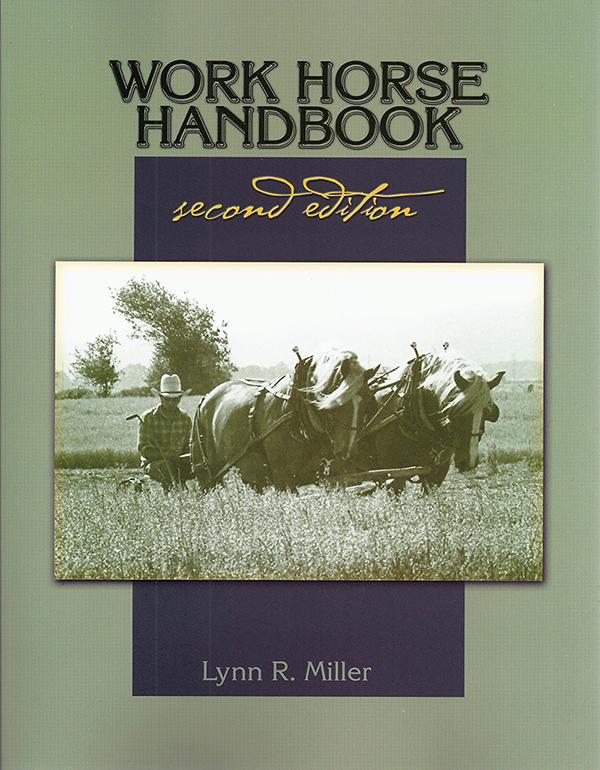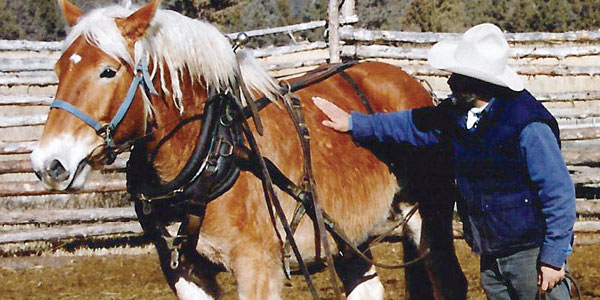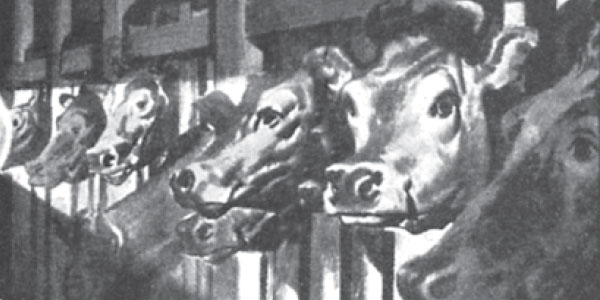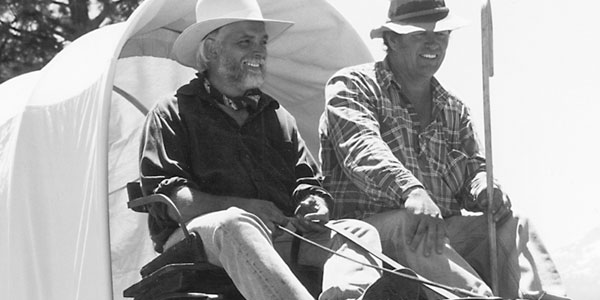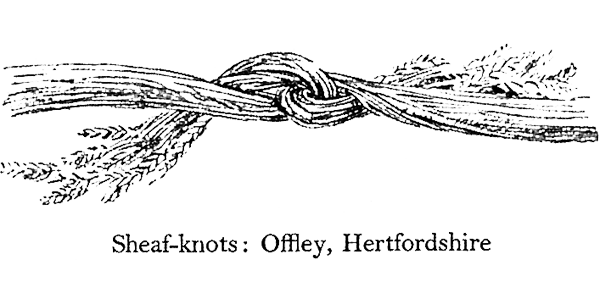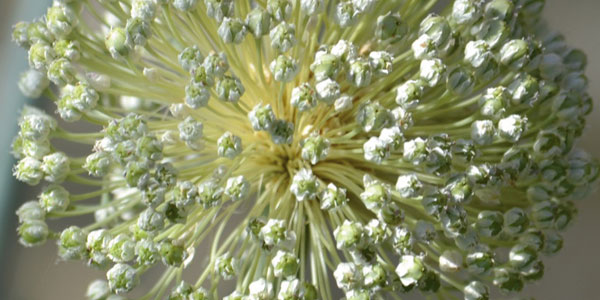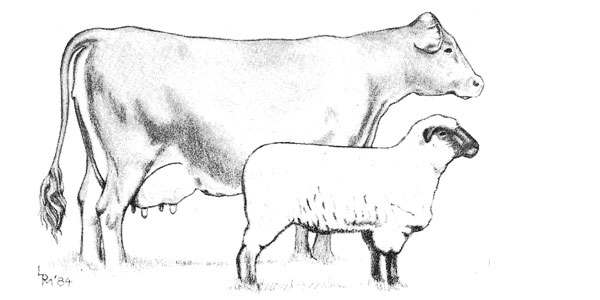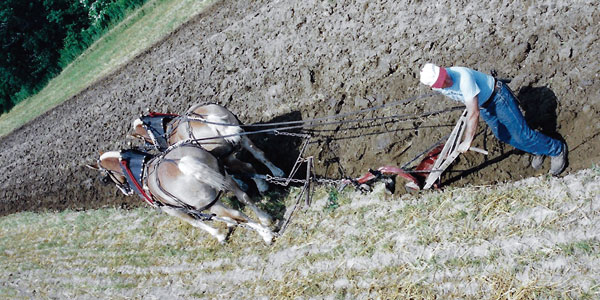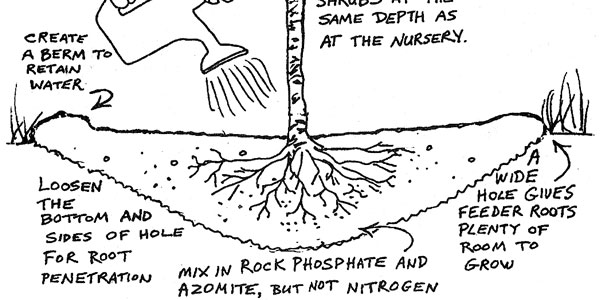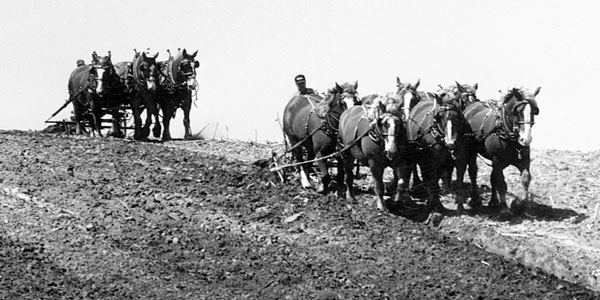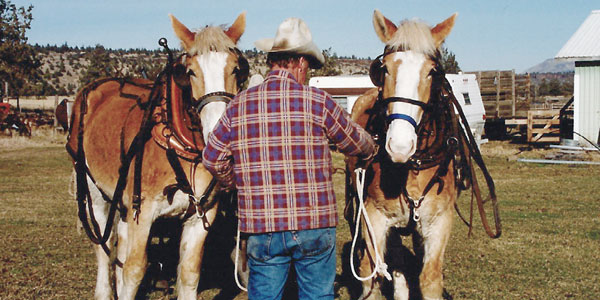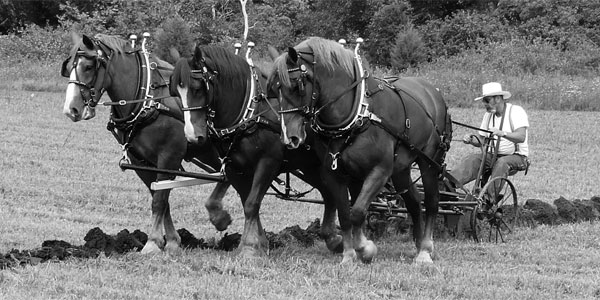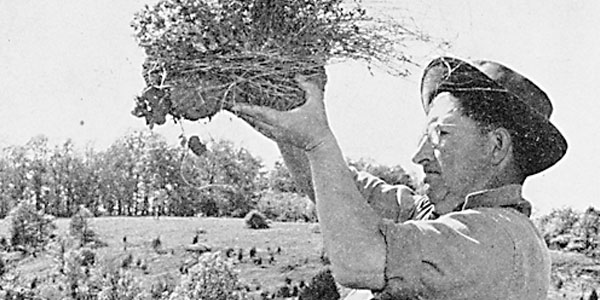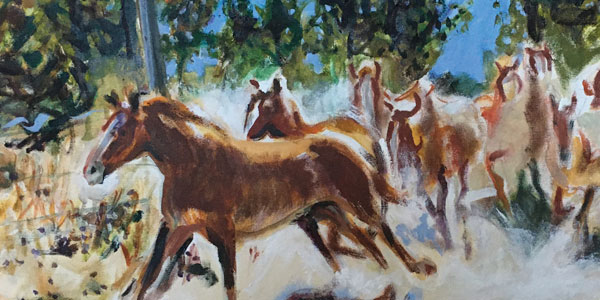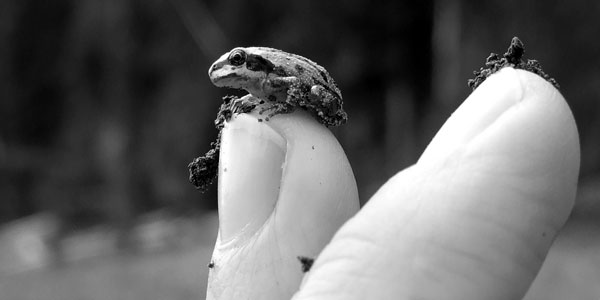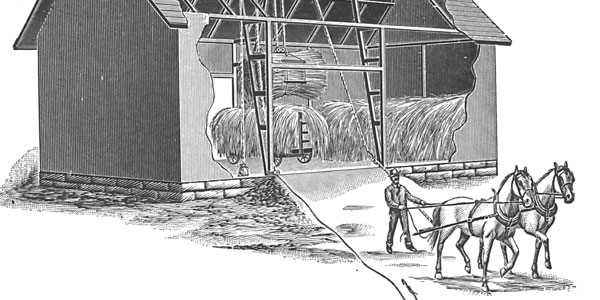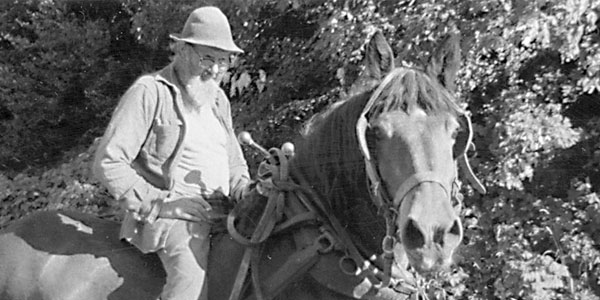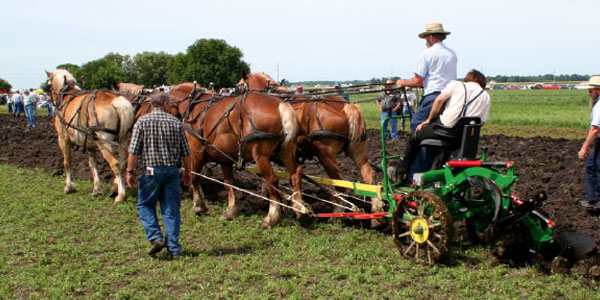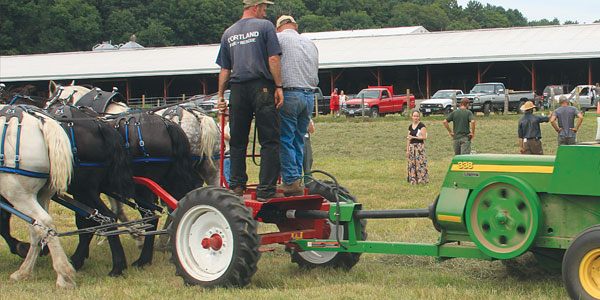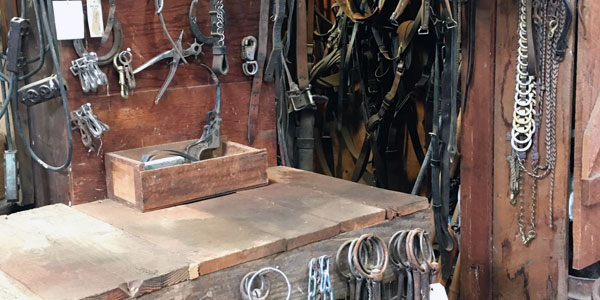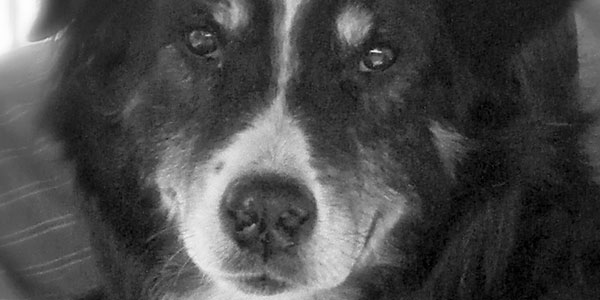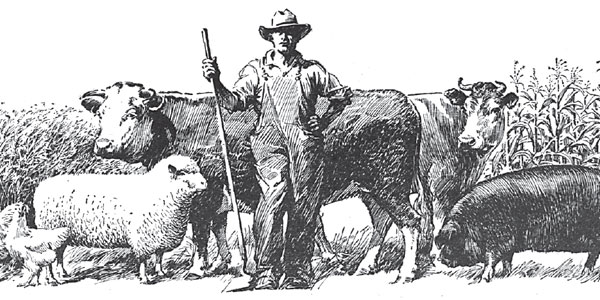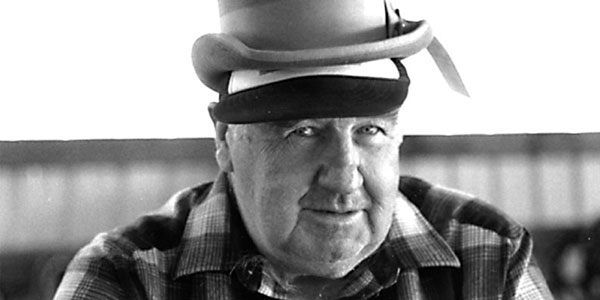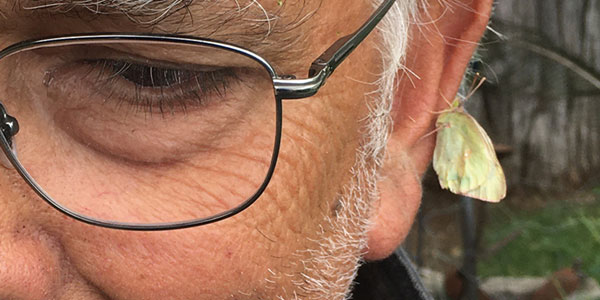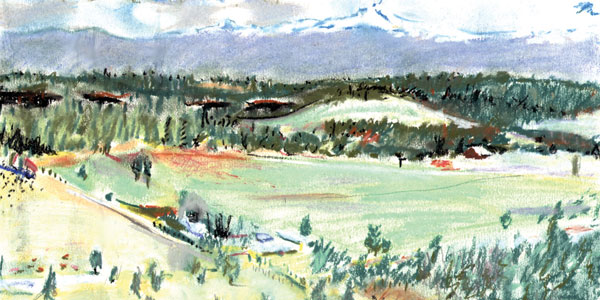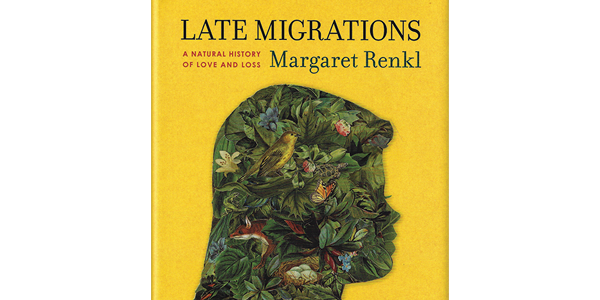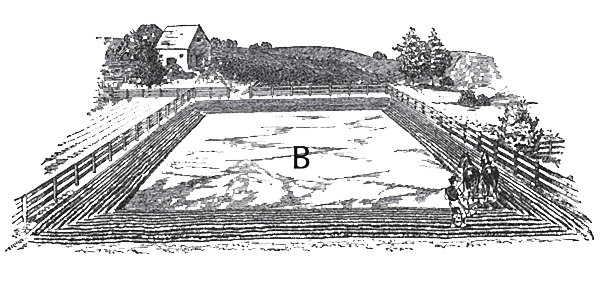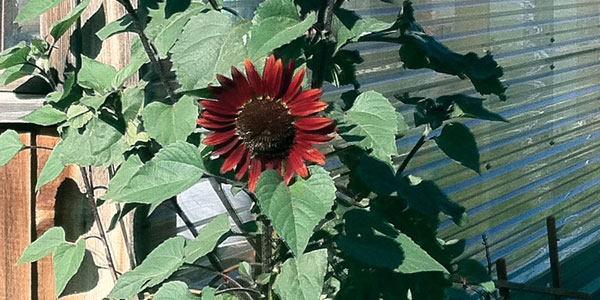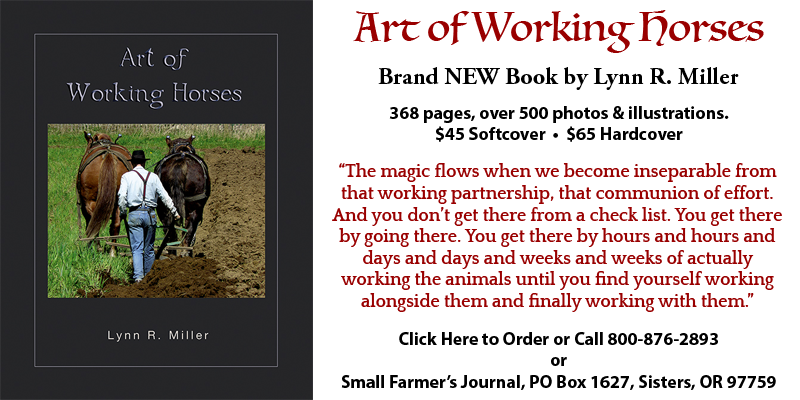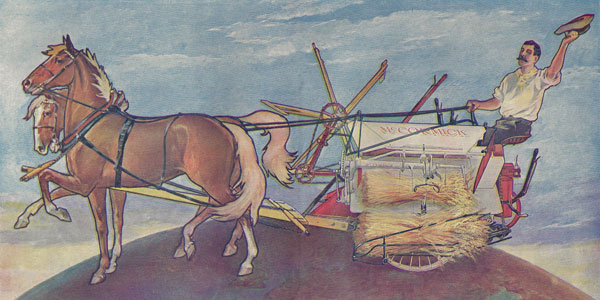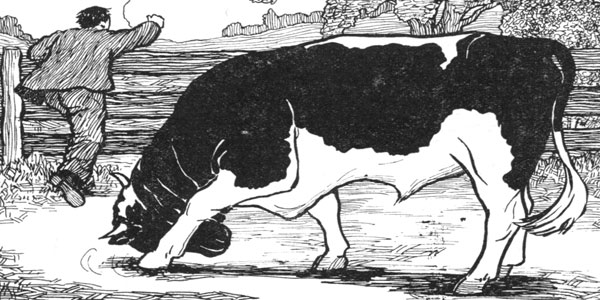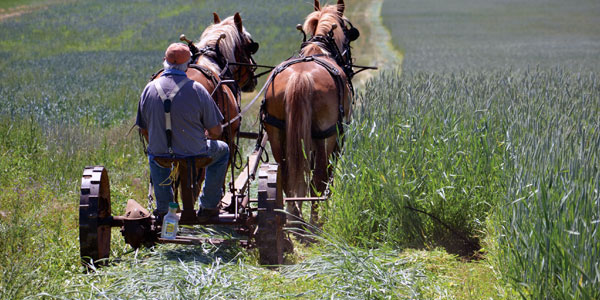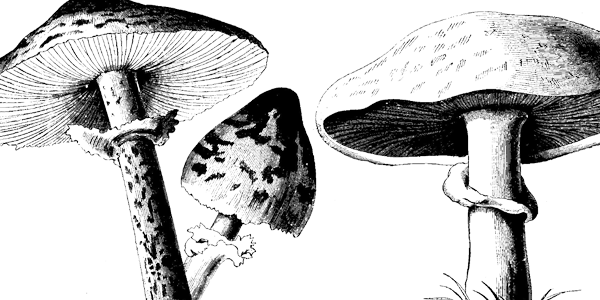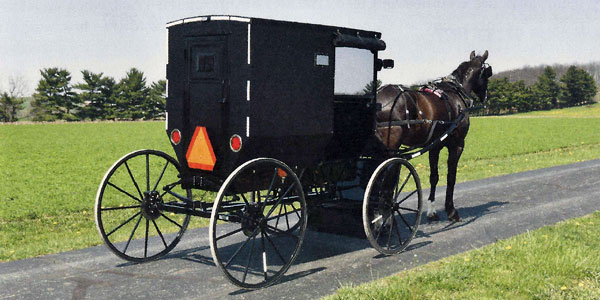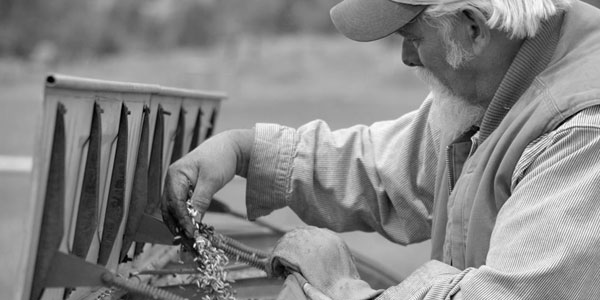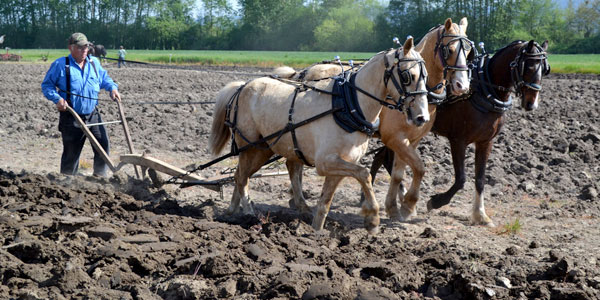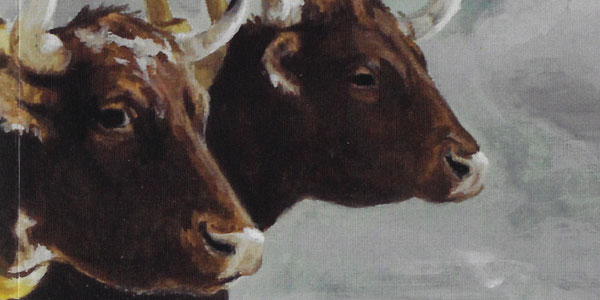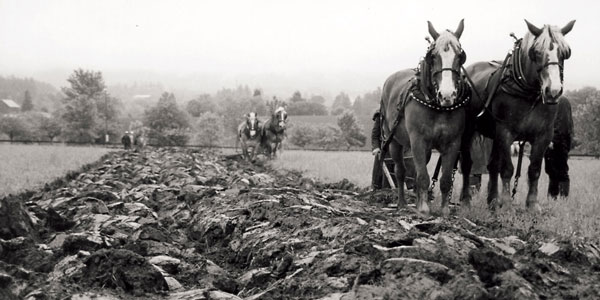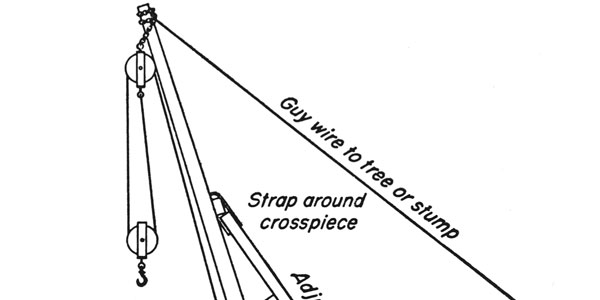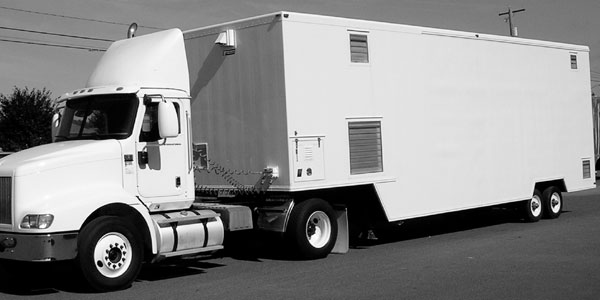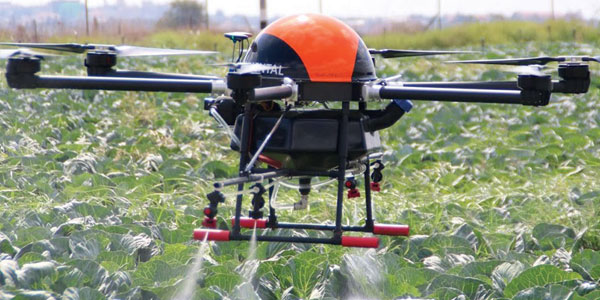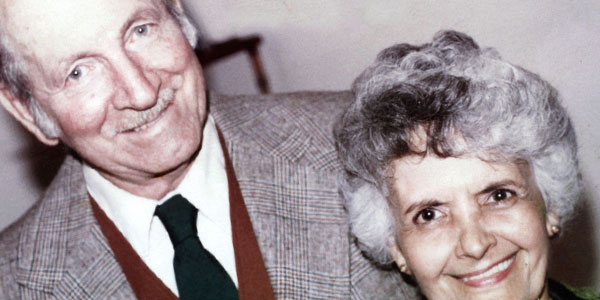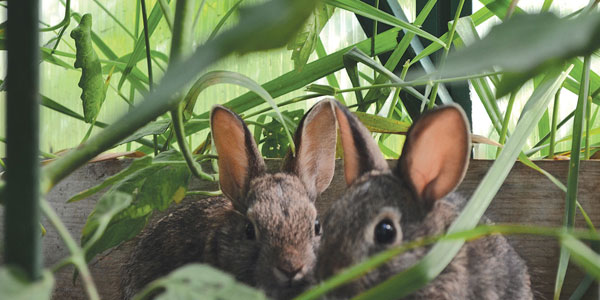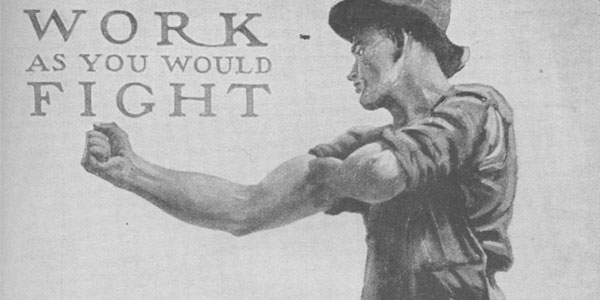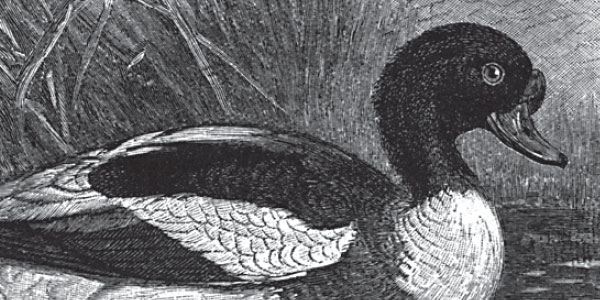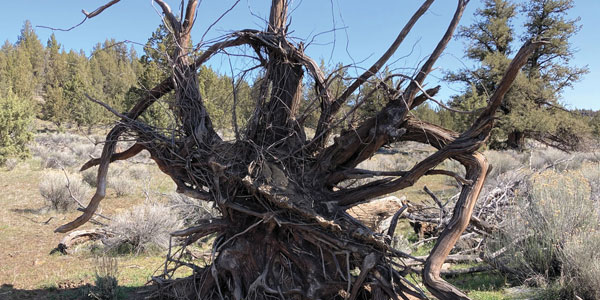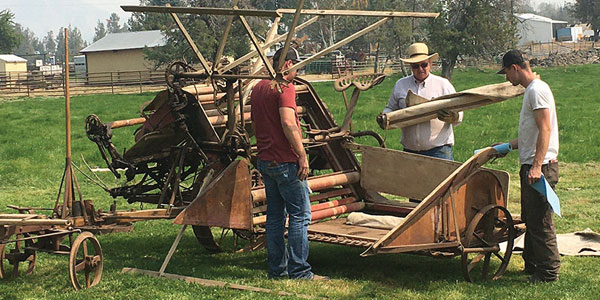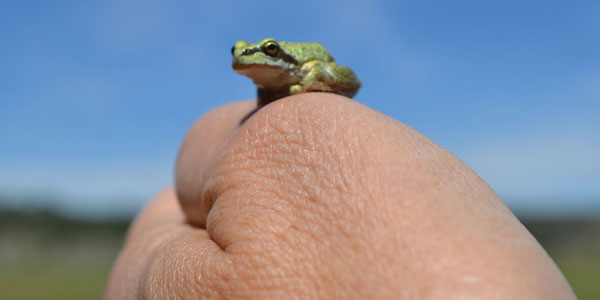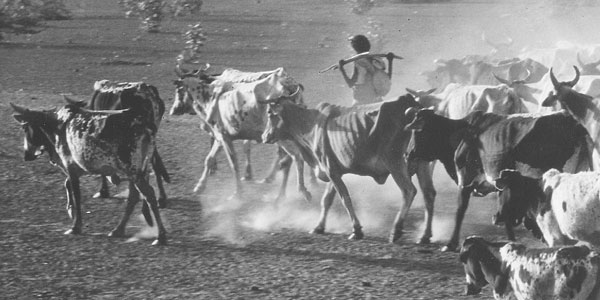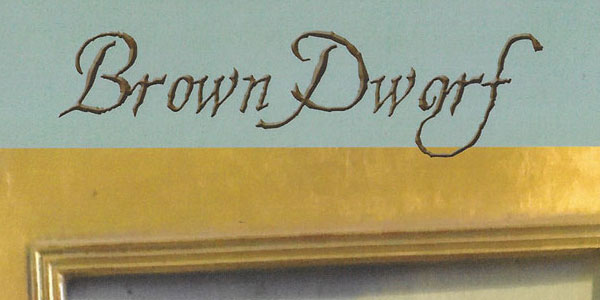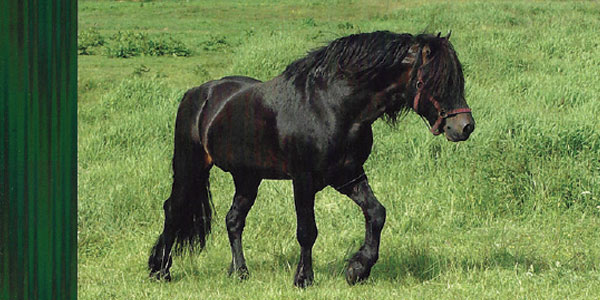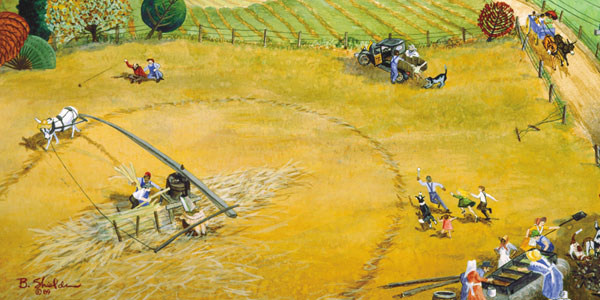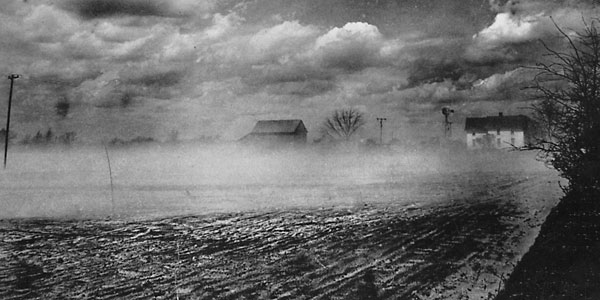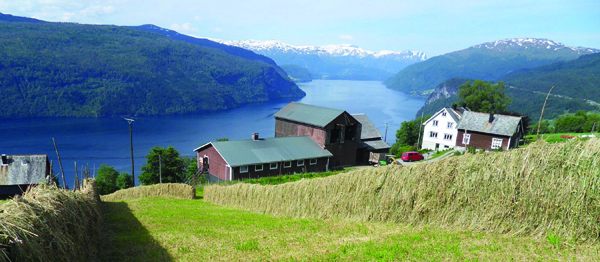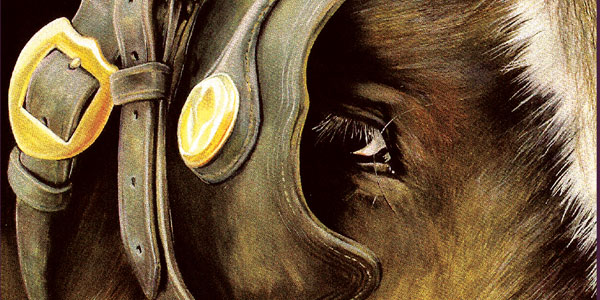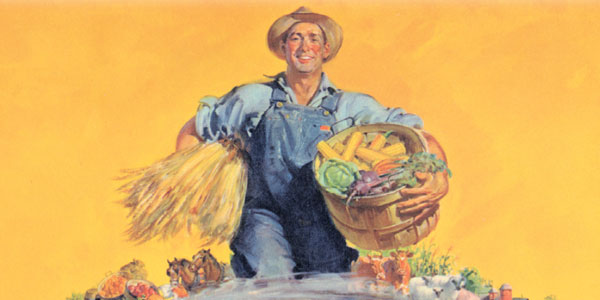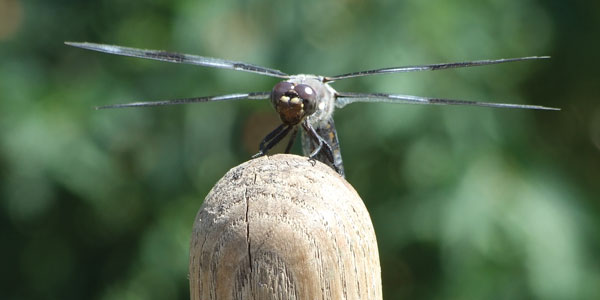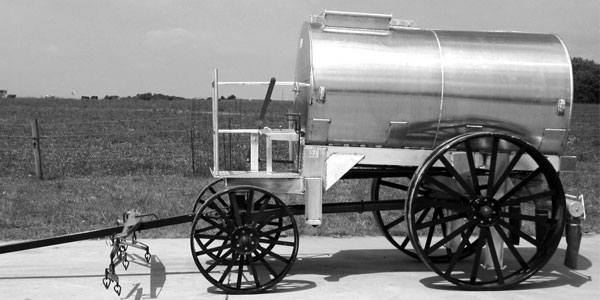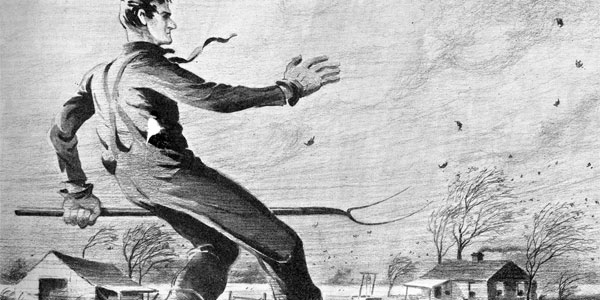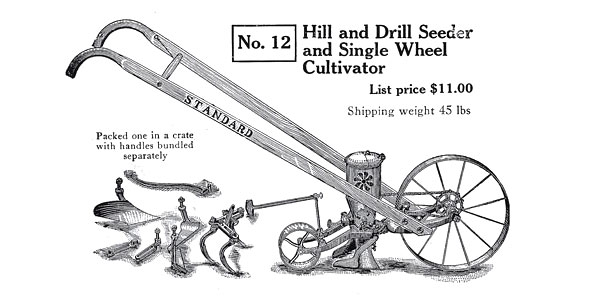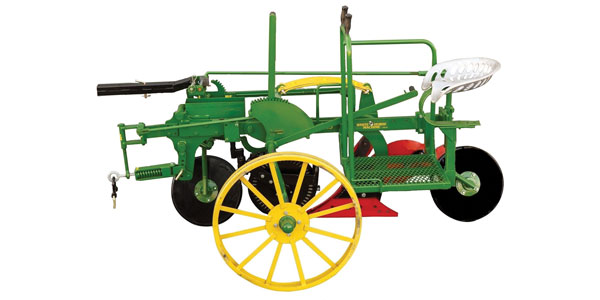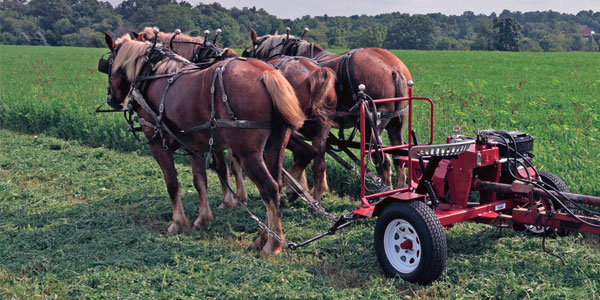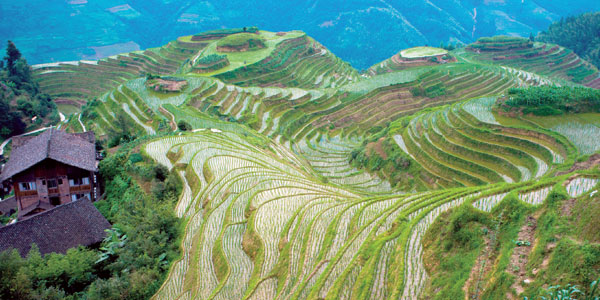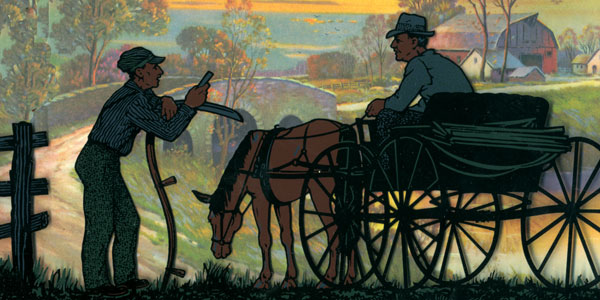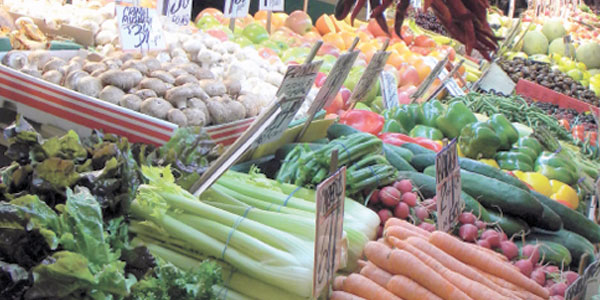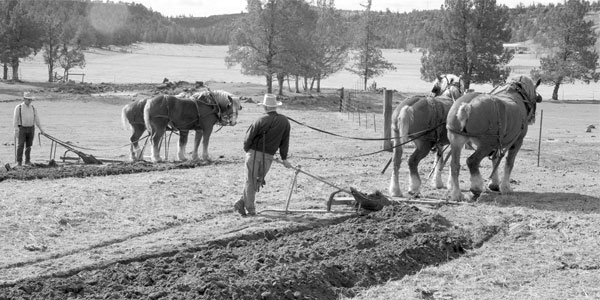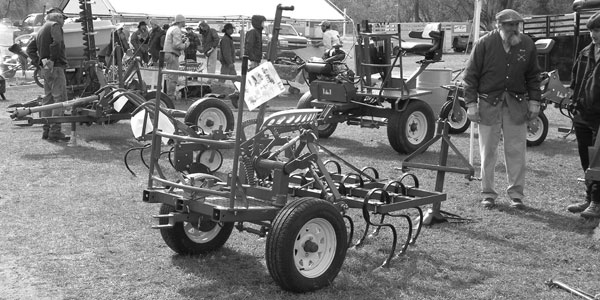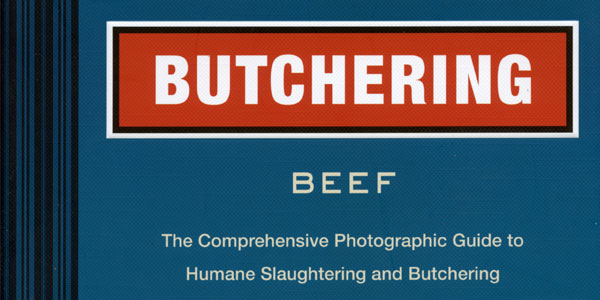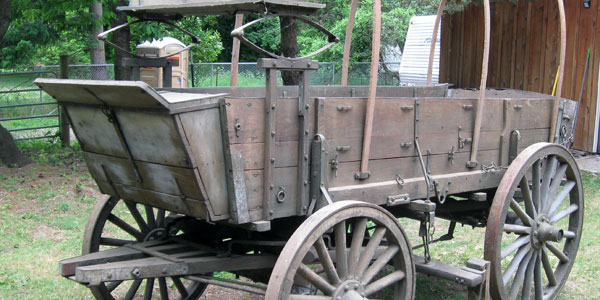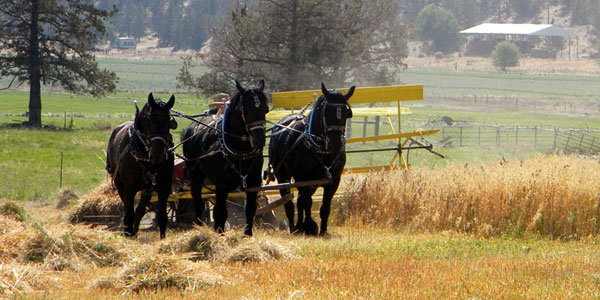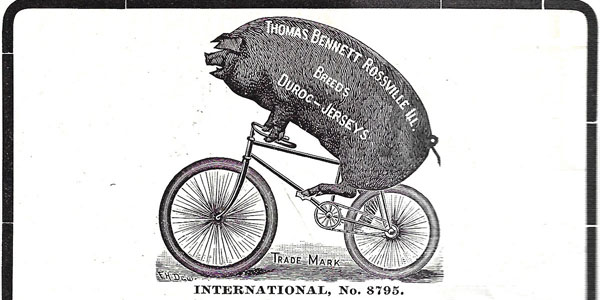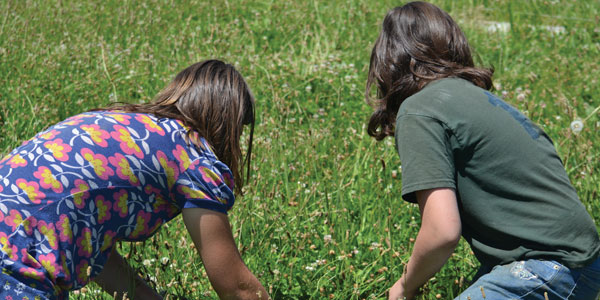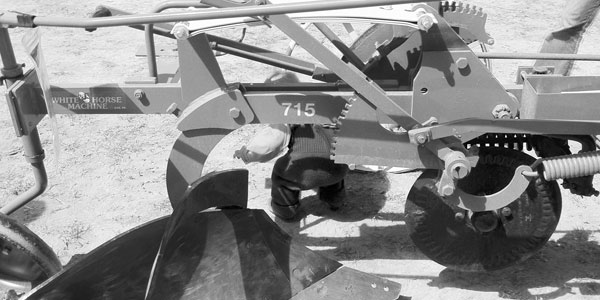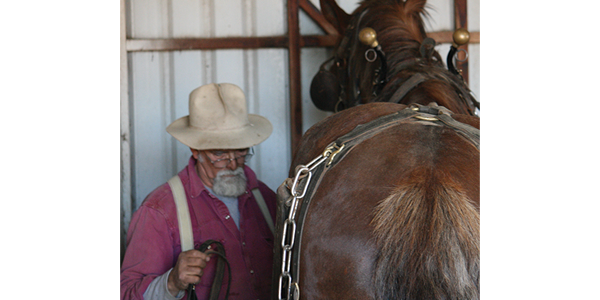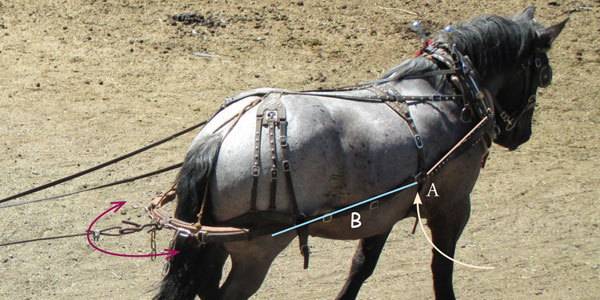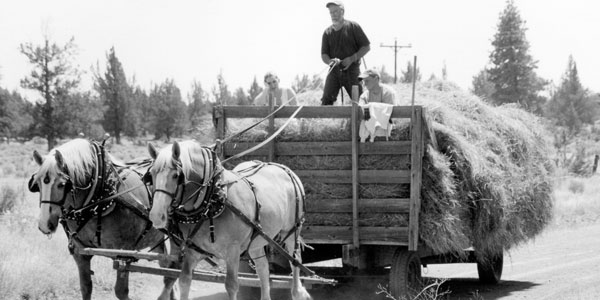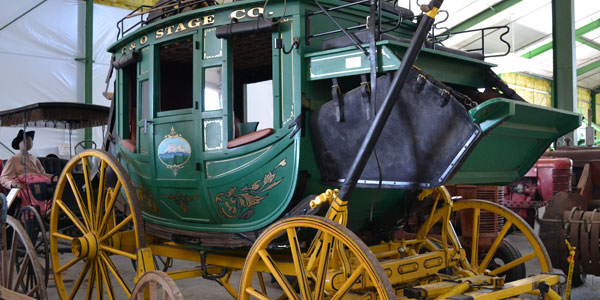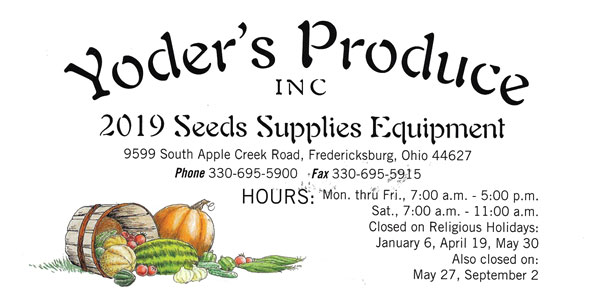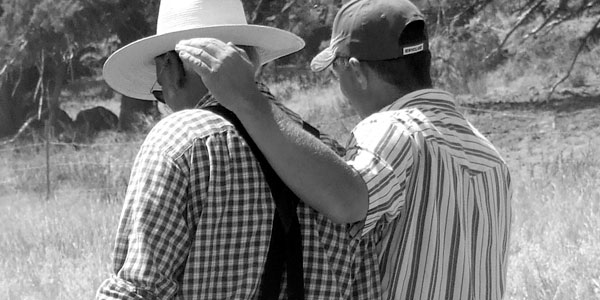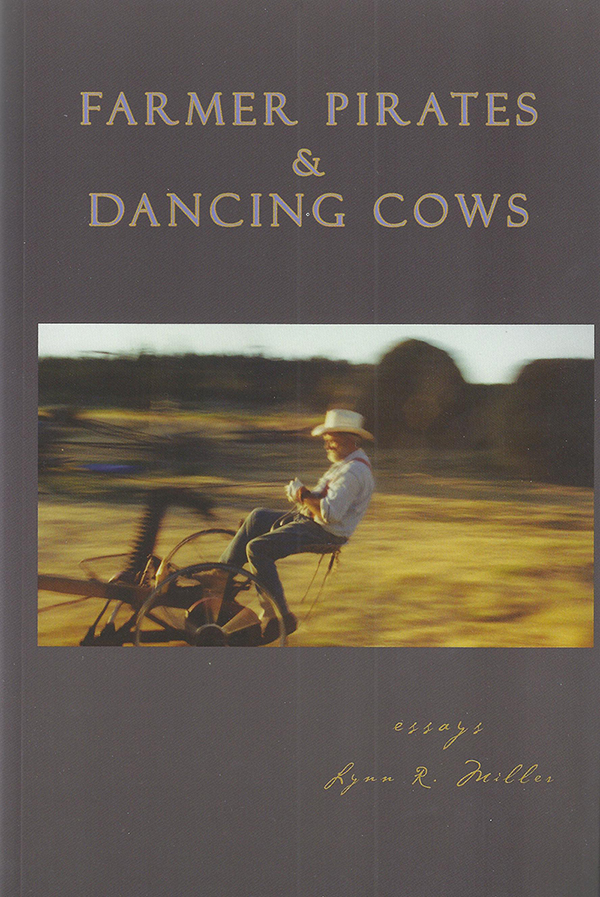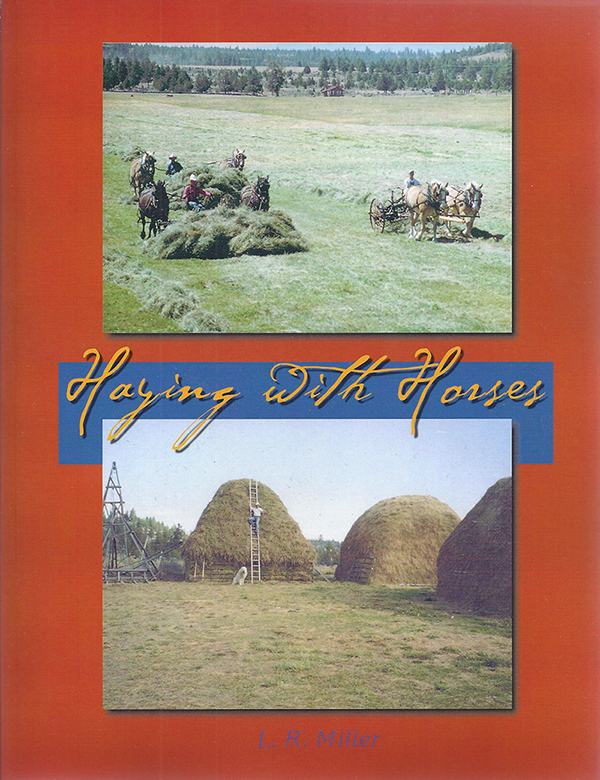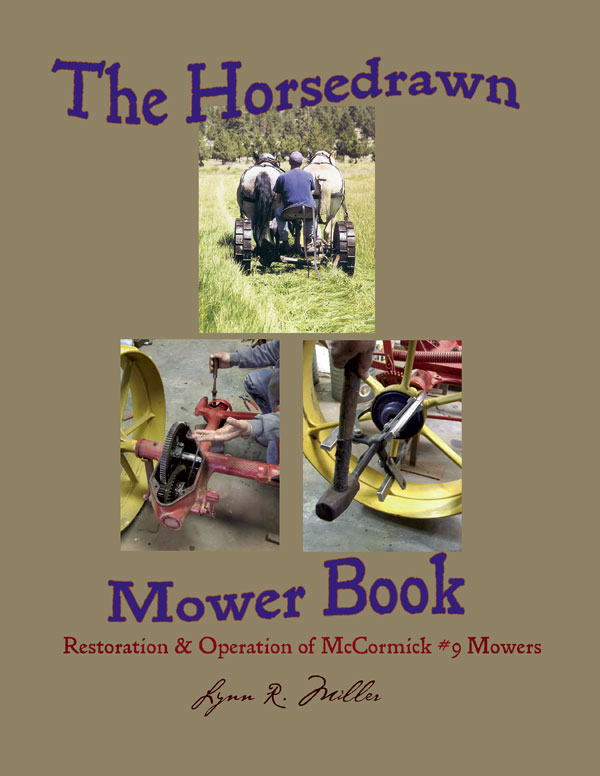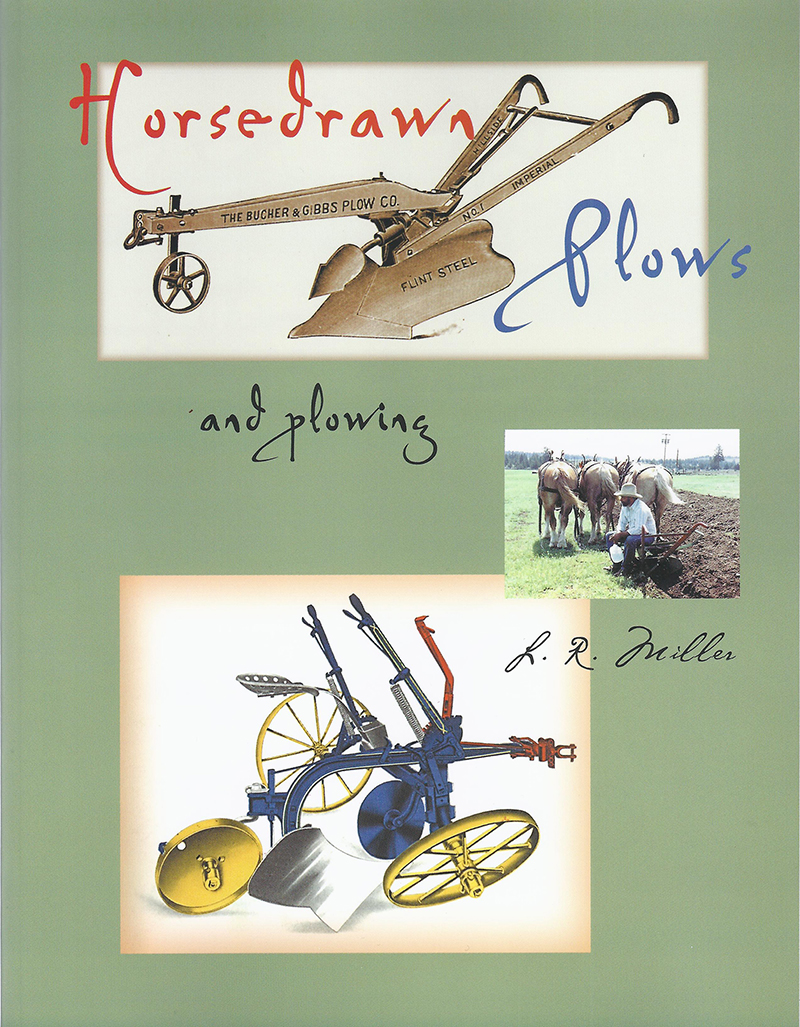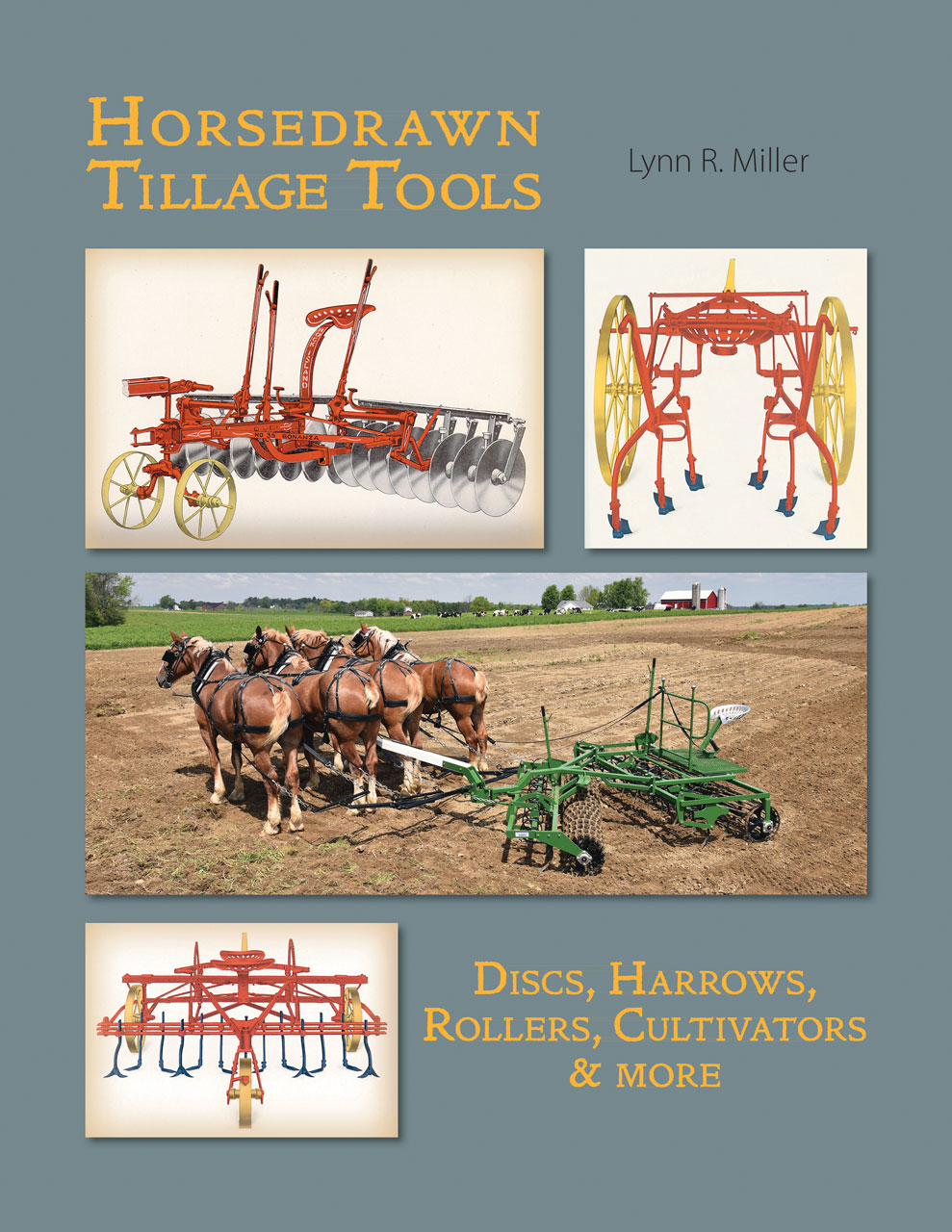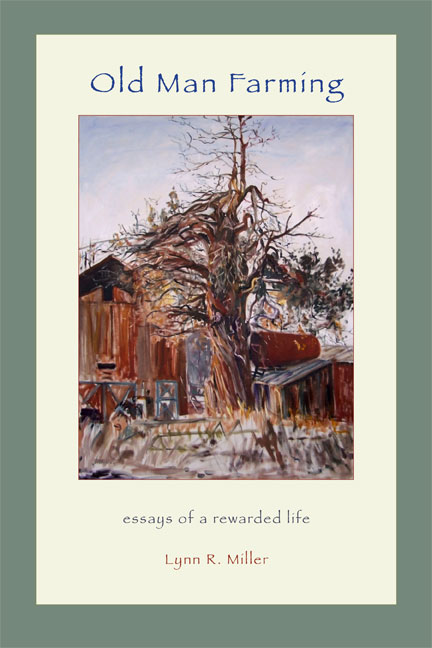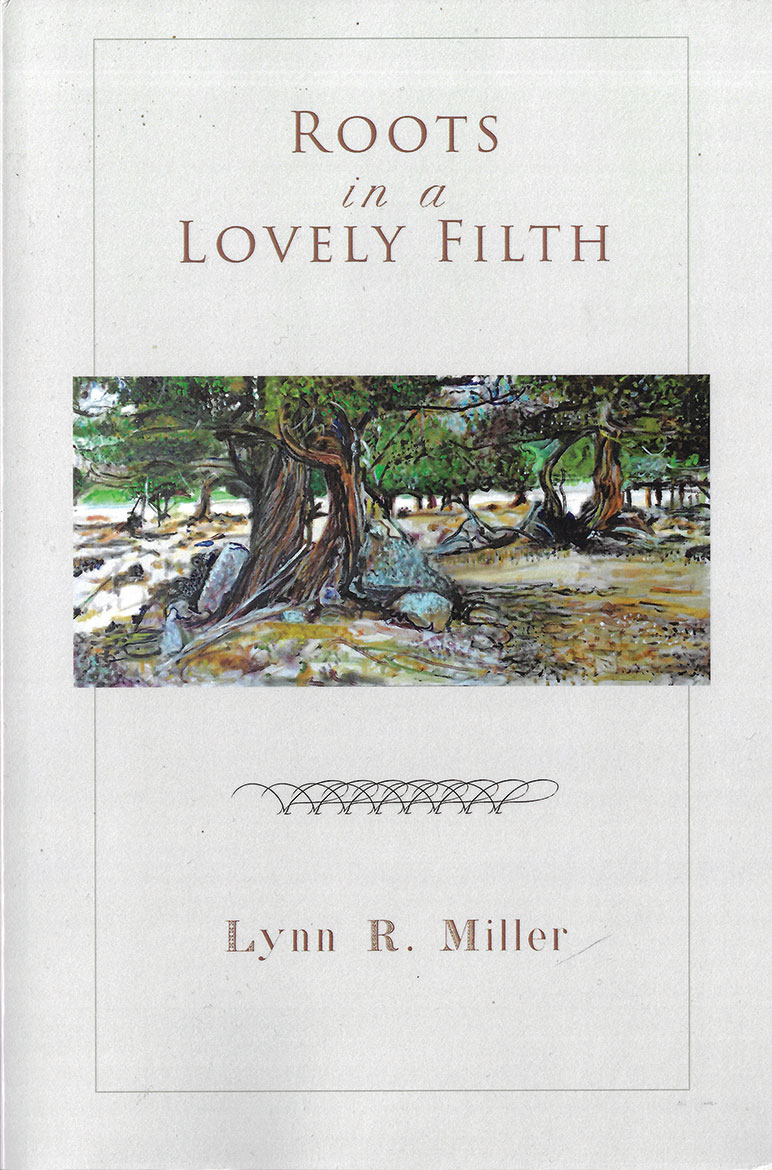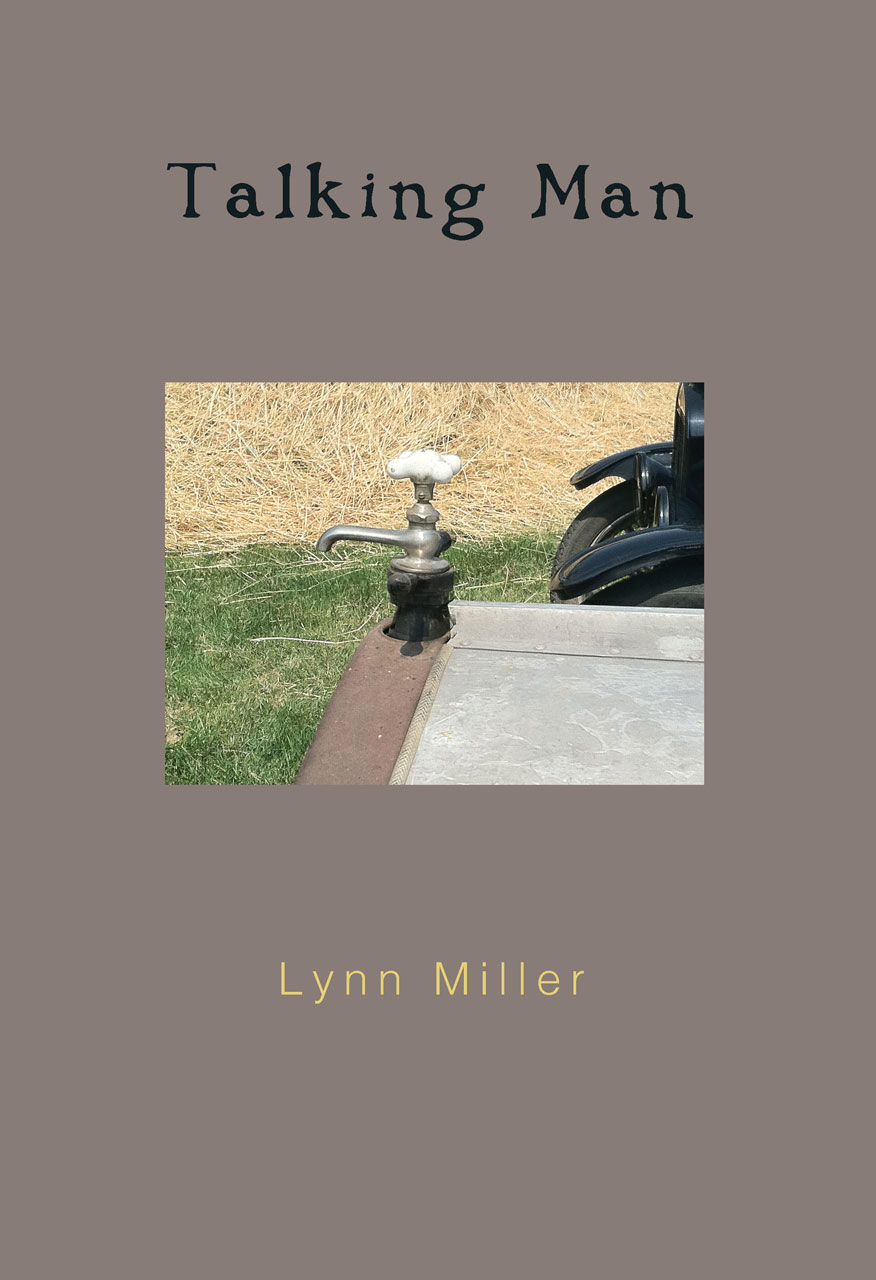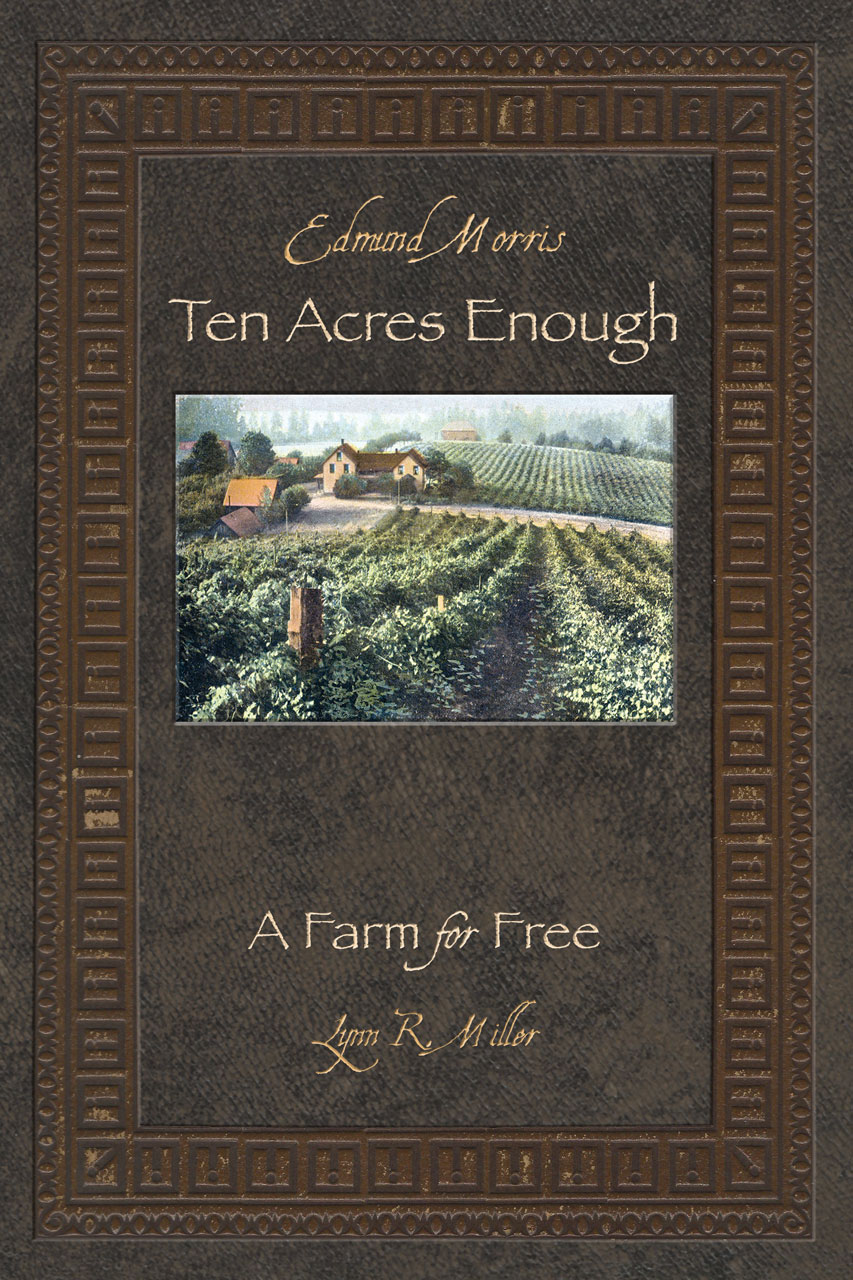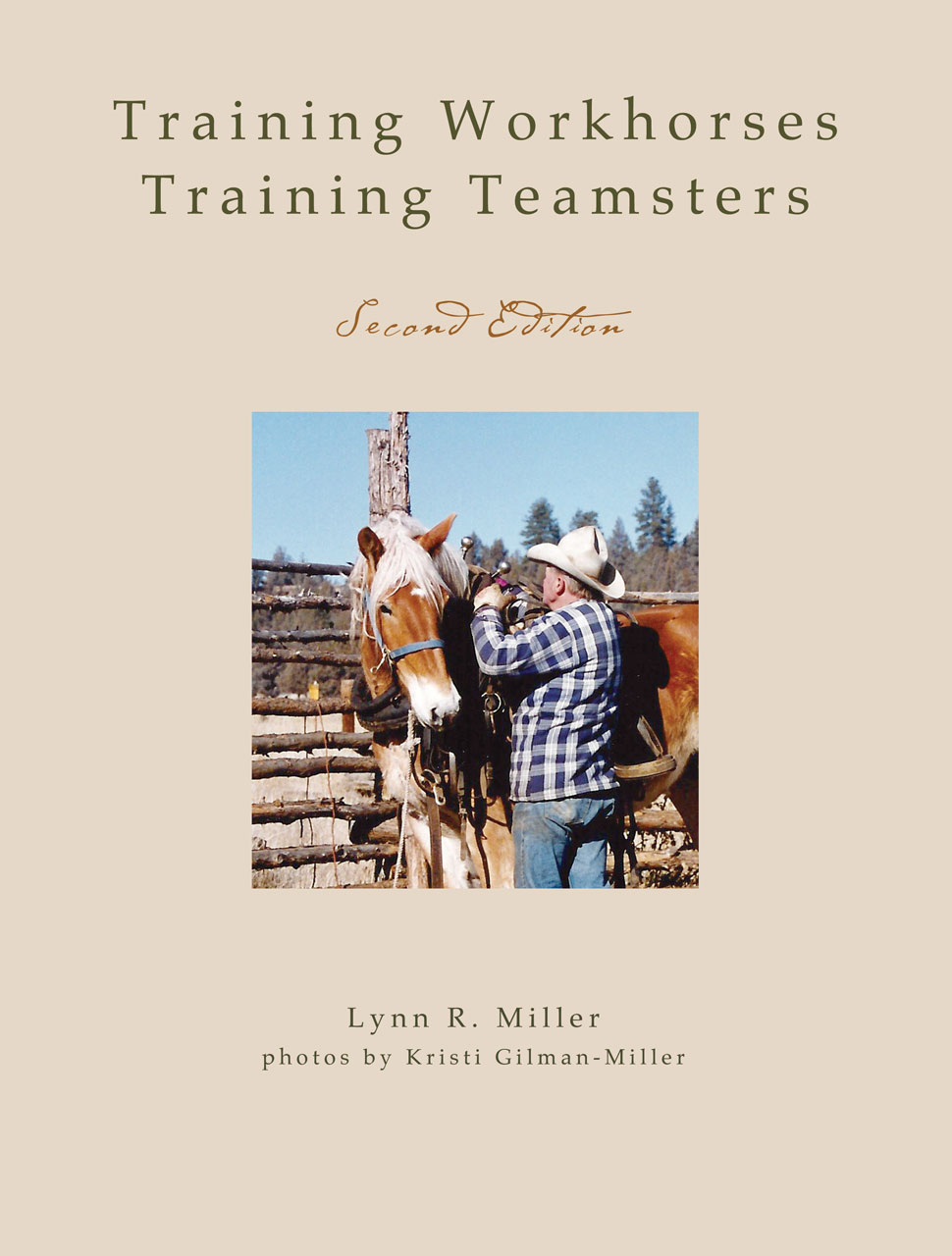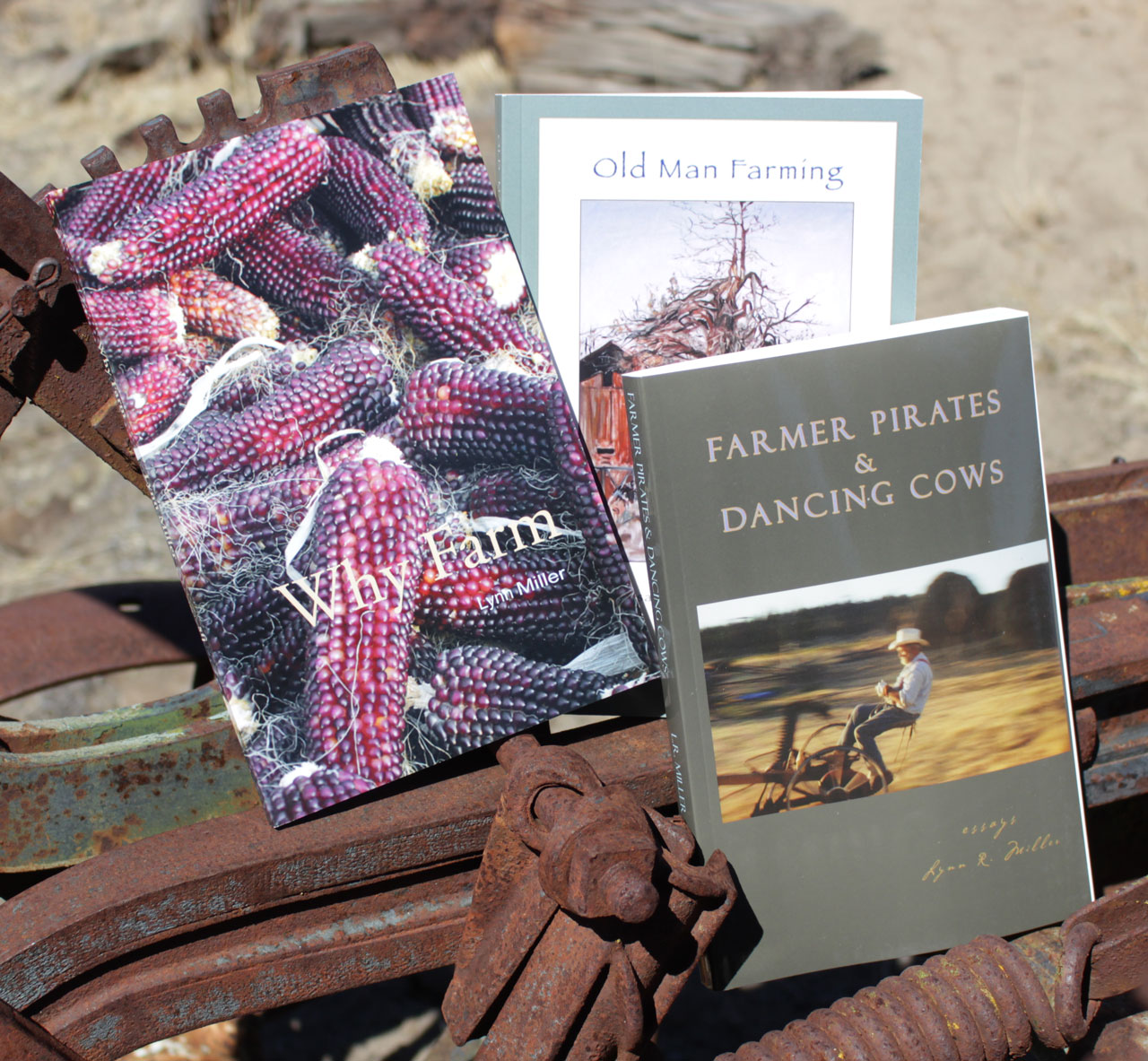Lynn R. Miller
19th Century Wisconsin Watercolorist
Wisconsin in Watercolor: The Life and Legend of Folk Artist Paul Seifert, by Joe Kapler, is a superb 2018 art book from the State Historical Society of Wisconsin. The extensive spread of the fascinating and beautiful Seifert paintings would be reason enough for a lover of art to search out this volume. Add in the wonderfully researched and written story of this illusive gentleman and his life’s work and you’ve a double treasure.
A Cow, Some Chickens and a Bag of Seed
“Yes, with this approach to farming we make decisions and put our hands to some small manipulations but the very breadth of mixed crop and livestock systems often quickly leave us behind and spread out to do their own work of symbiotic osmosis and complementary relations.”
A Cow, Some Chickens and a Bag of Seed
The waking dream of my single digit years was of a doe-eyed Guernsey cow chewing her cud at a rail fence near the barn while, across the lane – inside a poultry-netting fence – a mixed flock of hens pecked at grains as a mottled white- gold- red and black rooster stood tall at guard. In a wheelbarrow between cow and chickens was a bag of grain – or was it seed? The dream had muted sounds and sharp competing manure odors. I loved that dream, still do. It always brought me comfort as it offered to me the simple, infinitely useful push as question… ‘okay, what are you going to do next?’
A Farm for Free
Where to begin? How do you get in the proverbial ‘door?’ Instead of saying out loud “I want to learn how to farm, I want to learn everything you know.” Save it as answer to a future question. Instead introduce yourself to that farmer and offer this; “How may I help you with your farm work?” And if the answer is, “I need those pumpkins loaded carefully on this wagon, can you handle that?” You say “Yessir,” and do it.
A Farm in the Way – Give Red Her Head
We share our ranch habitat with our work horses, cattle, poultry, bees. We also share it with a vast assortment of wildlife. As an example, we have spoken before of the trials and thrills posed by the visiting herds of Elk. Usually our thoughts go to the challenges and intrigue of how we balance our commitment to improving the wildlife habitat that is our ranch with a need to control or mitigate the damage the elk do to our farming and fences. A recent tragedy brought into focus the possibility of an inverse.
a farmer’s agriculture
First we had hunting and gathering. Then we had farming. Those two periods of human history lasted quite a long time. Then we had agriculture, morphing some would say by necessity into the highly extractive agribusiness model of soil mining – simplify by calling it industrial agriculture. In the wider scope of human history, industrial agriculture has been a blip.
A Farmer’s Promise
How is a farmer’s promise unique from a doctor’s or a politician’s or a realtor’s or a salesman’s or a mom’s or a dad’s or a child’s? Family heritage and environment notwithstanding, the child’s promise is, on most counts, wrapped in that young person’s formative potential, in his or her trajectory, in their blend of hope, faith and innocent optimism. A farmer’s promise is similar to a child’s except for the fact that the requisite optimism cannot always be called innocent. Most other categories – lawyering, doctoring, parenting, sales, politicking – by definition, have very little potential affected as they are by an inverted optimism with the resulting twisted and compromised sense of acceptable outcome.
A Good Day Mowing at the Lazy M Ranch
There were two irrigated fields, adjacent to one another, and totally 25 to 30 acres. With only a couple of minor mechanical adjustments we mowed pretty much uninterrupted (except for water breaks and photo ops) and finished the job in under 3 hours. (For those of you who are interested in the applied math: These outfits can cover 9 to 10 acres each in one day. Using 9 as an average that means these 5 mowers can drop 135 acres of hay in three days.) Mike told me that when the hay was ready Nick would spend a six hour day with forecart and rake just ahead of the baler.
A Mulch of Time
One tangible way time exists for me is that I see it in the aggregate mulch or ground cover of my life, a blanket of experiences that keeps getting added to. That mulch shades the basic inescapables, the nasty and mortal shape of me. That mulch, that blanket is something I can measure. That mulch conserves my spiritual moisture and helps me to continue growing. Now this year’s experience with bees goes into that measure. I can say these sorts of silly things because I am old. When I was younger I couldn’t get away with it.
A Ride Through The Quarter
Situated a few blocks from the French Quarter, the Mid-City Carriage Company stables 28 mules and 12 head of horses along with a wide variety of carriages, the staple of which is the Vis-a-vis. They hold seven hack permits for the Quarter which is the cornerstone of the service. Along with this they do weddings, funerals, and special events. There are twenty drivers and ten support people including office help, checkers, a full-time farrier and a wheelwright. This is a busy and successful enterprise which was built slowly and deliberately.
A Short History of the Horse-Drawn Mower
Book Excerpt: The enclosed gear, late model John Deere, Case, Oliver, David Bradley, and McCormick Deering International mowers I (we) are so fond of had a zenith of popular manufacture and use that lasted just short of 25 years. Millions of farmers with millions of mowers, built to have a serviceable life of 100 plus years, all pushed into the fence rows. I say, it was far too short of a period.
Add Vantage
I am a trouble maker, a mosquito, an ankle biter, an agitator, a sneak thief, a tear monger, a bone rattler, a fibber, a cowardly body guard, a farmer pirate. Always have been, all my life. Don’t know any other way, even now as a greyhaired grandfather. It’s not because I’ve the contrarian need for the last and conflictive word. It’s because of my consuming critical vantage point. Some people sluff their critical vantage point off as they age, certainly cultures seem to. Certain things never seem to leave my shelf of concerns. For example at my desk I have a little note which reminds me daily that every 3.6 seconds someone somewhere in the world dies of hunger.
Additional Notes on Horsepower
If it don’t feel right – check it out! Instinct is a most important applied aspect in every successful teamster’s tool chest. When things seem not to be as they should be, when things feel odd or out of balance, when everything looks a little different to you but you can’t put your finger directly on the change – PAY ATTENTION. Take the time to check the animal’s comfort, the fit of the harness, the buckles and snaps. It could be in the air and they feel it but you don’t.
Alexandra Klimas – Fine Animal Studies
There are many working definitions of art, and doubtless there will be new ones in the future. The definition that encourages me to see the clear relationship between farming and, say painting, is the one which places looking and manifesting what is seen, felt and encouraged into imagery. Photo realism as a genre has a rich tradition stretching back to Hans Holbein the Younger and Johannes Vermeer, a tradition which has challenged individual artists to discover and instill the tricky visual elements which embue the images with a living vitality. Alexandra Klimas has discovered her access to the living image.
Amish Farms in Ohio
I took these photos while driving around the Mt. Hope area of Amish Ohio. Whenever I am here, I feel a remembrance for how things might be. Strong, fertile, beautiful, individual farms each self reliant and yet dependent on the overall supportive community.
Anatomy of a Threshing
The McIntosh Threshing Bee of 2021 was, for the sake of the times, scaled down to a much smaller, safer group of participants. As for implements, they employed their Case threshing machine, an old Oliver tractor for belt drive and a John Deere grain binder. All of the equipment has been well maintained and is fully operational. Two days before the scheduled threshing, the Case separator was taken from barn storage along with the required hand tools; these included pitchforks and old wrenches, but also a shop vacuum cleaner, a grease gun, grease, oil and a compressor. All round the Case thresher there are many handy inspection ports and access doors. Jacob and Jamesy McIntosh use both compressed air and vacuum to disturb and remove any nests, dirt and settled chaff and seed. They work methodically walking around the big machine and cleaning through inspection holes then turning the corresponding pulleys a little to clean some more. They spend pretty much all of a half day with this process.
Anatomy of a Workshop
Doug and I, lifelong friends, have both conducted workshops for decades. In 1979 Doug, Ray Drongeson and I did a work horse workshop together at our first Draft Horse Auction in Albany. Though we frequently share notes, we have not done a workshop together since 1980. It was past time, we felt, to see if a set of students could handle two old goat teachers with parallel philosophies and different tricks. And we wanted to add to that challenging confusion, so as additional instructors we brought together Tom Triplett, Doug’s step father, and Mike McIntosh from nearby Redmond to join Doug and I. (The last day Mike’s Dad Mac McIntosh also joined us.) Then, recognizing that horses are instructors as well, we brought together an interesting mix of animals from four different outfits.
Apprenticeships and Labor: the Coincidence of Wants
There is astounding variety in apprenticeship offerings; a variety which, though it may prove frustrating for all involved, does represent well the vitality and diversity of our alternative farming culture. I for one do not want to see that diversity lessened, but it sure would be helpful to find some commonality of application since we have such a firm and outstanding commonality of purpose already in place.
Are Your Horses Working for You?
“Old timers” are fond of saying that all it takes are lots of long hours in the field, ‘get yourself and the horses sweatin’ and keep them that way.’ It is felt that most training challenges and glitches in the system will work their way out by long hard hours of work. There is certainly something to say for this. However, it is far from the only way. It is my contention, born of a quarter century of experience, that foundation training and good common sense system structure will give us better results. The horse who stands quietly and calmly when needed, regardless of whether he is tired or fresh, is the superior work mate. This is accomplished by well set training and trust.
Ask A Teamster: Bad Habits
We have a horse, an 11 year old Belgian mare with a rather nervous type personality, who chews on the ends of her lines. It seems to be similar to biting fingernails in times of stress. Other than this little quirk she’s a reasonably good worker and well behaved. Should we get her into therapy? If we stop this habit will her pent up frustration just find another outlet? Perhaps a worse one?
Basic Welding for Farm and Ranch
Hands-on human-scale farming will frequently put you in need of a way to repair implements and equipment, including gates, hinges, hangers and such. Success with your operation may well hinge on your willingness and ability to do most of these jobs yourself. Fifty+ years ago, when I got started farming, I was immediately intimidated by the cautions and precautions implicit with welding, either oxy or stick (arc). My first sense was that this process was not for the beginner or novice. I got over my trepidations. That was a long time ago. Since then innovations in welding technologies have come a very long way, adding to the hazards, and complexity, tenfold.
Beautiful Old Tools
The O.K. Rim Wrench • Boss Hand Vise • Williams Auto Tool • Stanley Planes • Elgin Wrench • Green River Tire Bolt Wrench • Barnes Scroll Saw • Bemis and Call Combination Wrench • Tool Restoration
Beginnings: Arrogance – Ignorance
Its been a long time ago now, from 50 to 55 years or so, back when I felt myself drawn to each and every image I ever came across of horses or mules working in harness. Didn’t know why. I was a city kid with no immediate background in the stuff. But the attraction was very strong and central to an overarching dream of someday having my own old-fashioned, general farm. Back in the fifties and early sixties, in urban centers, the conventional wisdom had it that agriculture had grown up for good and all. The industrialization of farming with its concomitant chemistry and heavy metal disease (big machinery) was, back then, already fashioning a base for today’s genetic engineering and cyber nonsense. Way back then anyone who expressed an interest, let alone a preference, for the old farm was branded as “backwards” and “sentimental.”
Between the Rows – Next Generation Horsedrawn Technology?
With the rapid expansion in the small farm sectors around the world we are seeing, not only a return to time-honored, pre-chemical, organic production systems and a marriage of those to the most exciting, deeply thought-out, new organics, but also the intense inquiry into new and improved mechanical systems. At the top of most every new farmer’s equipment query list is a desire for the MOST appropriate technology.
Bobsled Building Plans
Here are two, old-style, heavy-duty, bobsled building plans featuring the sort of sleds you might have found in New England and the Maritime Provinces of Canada. (In fact you might get lucky and find them still.) These are designed to haul cord wood on the sled frame.
Book Ends: Farming for Free
That’s a pair of book ends for you; the Age of Enlightenment up against the Age of the Dodo. But the Dodo bird went extinct long ago you say? Yes, and that is the very strength of the example; my point in calling this the age of the Dodo is to make a case for what is certain to follow the obsolescence of humans, of what it means to be a thinking, working, compassionate, and musical human being. The unthinkable is upon us, humans may just become extinct and by their own lazy hand.
Book Review: Storey’s Illustrated Guide to Poultry Breeds
I absolutely love chickens and ducks and geese! There, I stand exposed. And this book I am reviewing, I love it, too!! It is both a wondrous and wonderful book, especially if you are a poultry fancier who needs to know the what (duck, goose, chicken etc.), why (as in why would you want to raise this breed) and whose-its (as in crazy tidbit info i.e. coloration nomenclature) of individual species – or maybe you just want to be able to see how they are different. As you may note by the copyright date, this is not a new book but it deserves careful attention as a reference volume. It will have a long shelf life. It features well over one hundred excellent color photos and is expertly organized for easy use.
Book Reviews
Lynn briefly reviews several books, including Joe De Yong, A Life in the West by William Reynolds; Storey’s Guide to Raising Beef Cattle 4th Edition by Heather Smith Thomas; and the Farm Collector Show Directory.
Buck & Mary Rickett: Successful Small Farmers
Ten years ago I answered a classified ad and went to a small western Oregon farm to look at some young laying hens that were for sale. That visit to Buck and Mary Rickett’s place made a quiet impression on me that has lasted to this day. On that first visit in ’71 my eager new farmer’s eye and ear absorbed as much as possible of what seemed like an unusual successful, small operation. I asked what must have seemed like an endless stream of questions on that early visit.
Buck Rake Plans
Some years ago I rebuilt my John Deere Buckrake. These photos appeared in my Haying with Horses book and several readers have requested that I publish the dimensions of the wooden pieces. I offer those on the next page. I hope that by looking at these photos and referencing the dimensions anyone interested in trying to build a buck rake will have something of a head start.
Building a Buck Rake
I believe a person can build a buck rake from scratch, many old-timers had to, utilizing salvaged parts from other implements; for example, the caster wheels from the back of side delivery rakes. The implement as conceived by John Deere and its predecessors Dain and Emerson, is structured with two connected parts: the mainframe with lifting mechanism and caster wheels – then the front-axled two wheels which carry the hay tooth basket.
Building a Pole Stacker
The design and construction of the pole stacker evolved. The original idea had the pole anchored in the ground. It was quickly understood that Kenny wanted to be able to move the stacker. We were fortunate to have Jim Butcher – our woodman – and Mike Atkins – our iron man – to add to a mix of ideas which allowed materials on hand and special pieces from neighboring metal worker (cousin) Todd Bergeron to fit together for an ingenious and workable pole stacker.
Butchering Chickens
Some years back I had the pleasure of reviewing Adam Danforth’s outstanding and astounding volumes on butchering meats. Those titles won him the James Beard Award among others. His newest title, Butchering Chickens, follows in the very same astute footsteps. This attractive, well organized handy 175 page book, subtitled A Guide to Human Small-Scale Processing, is published by Storey.
Carrol “Mac” Dale McIntosh
Mac was a friend and example to every member of his large family and to many hundreds of people with whom he shared life’s adventures and hardships. And he was a living legend and folk hero in his time. Across the mountain west he loved, he was the homespun humble circuit riding ‘preacher’ of choice to devout Christians as well as those without church membership, those who just naturally sought comfort and understanding. He was also that quiet sort of horseman, without splash, who some might think got lucky to have had so many willing, comfortable, calm, grateful equine working partners. It wasn’t luck, he made them that way so artfully that you were hard-pressed to see how he did it. Often the only evidence of intent was a twinkle in his eye.
Charting
People ask this question in many shifting forms; “What made you choose the life of an old-fashioned horse-farmer?” Sometimes I answer it, sometimes I don’t even make an effort. But now I’m intensely interested in understanding how we must crack the new armors of the young if we are to “get through to” candidate novices, those people who think they want to do what we do. And we must get through to them if we are to complete the hand-off, the passing of the proverbial baton. So that means we have to honor all these questions and make good attempt to honestly and completely answer them.
Chicken Money
A great many small farms across North America keep ten to thirty laying hens for home family supply. Some of those folks might be surprised to discover that with a modest investment they could turn, or grow, that ‘sideline’ into additional farm income – but you need to know that it will take planning, an increase in daily chores, and attention to detail. And of course, to further assure success, it would help if you naturally enjoyed poultry.
Cockshutt Plow Found in Alberta!
Dale Befus introduced me to a plow I had not set eyes on before, most unusual affair though Dale assures me not uncommon in Alberta, this implement is a beam-hung riding plow (wheels hang from the beam) as versus the frame-hung units (where the beam hangs under the wheel-supported frame).
Cole One Horse Planters
The most populous single horse planting tools were made by Planet Junior. But they were by no means the only company producing these small farm gems. Most manufacturers included a few models and some, like Planet Junior, American and Cole specialized in the implement. What follows are fourteen different models from Cole’s, circa 1910, catalog. We published ten of these in volume 30 number three of Small Farmer’s Journal.
Collar Making
Back in the early eighties, when we were on an extended road trip up to Ontario, Canada and back through New England to Ohio Amish country, we had occasion to visit a small collar making shop where Kristi took these photos. We recently had to move our archives and I found these pictures in an envelope. I do not remember whose shop it was and have lost any notes that I took. But I vividly recall the action in the first photo as it mechanically stuffed chopped straw into the shaped leather tube which would become a work collar. The second apparatus was a size specific press for shaping the stuffed collar form. And the last tool pictured is a stretching table where the anchored, nearly complete collar was gently beat with a wide round hammer to even out any lumps in the stuffing.
Courting a Life
A long time ago I decided to stick my neck out and buy a small farm. I knew I had to do it. I was consumed by dreams of a place of my own. Dreams, and plans, and more dreams. Over thousands of late nights I had destroyed countless paper napkins and scraps of paper drawing little designs of where the farm house would be and the relationship of the chicken house to the garden and the barn…
Cultivating the Family Farm
“Soon I must die and it is important that I pass to you this discovery which has come to me too late. Organic farming alone is not the answer. When it becomes profitable the big companies will do it and destroy it. The answer is scale. We must do our farming small as the size of a man, as the size of his family. In this way it will belong to each and every one and it will be healthy and strong. You must carry this message, you must tell everyone. Thank you. And thank you for showing me your work. I love your great horse and the hay falling from the sky of the barn. Your farming is good, it is the size of a man.”
Dan’s Tractor Parts
I first met Dan 10 years ago or more when I needed a radiator for my old John Deere A. Sure ‘nuff he had everything I needed and a whole lot more. With lots in common we became good friends. But as with so many things of such like, I completely put out of my mind my responsibilities as editor of this Journal until just the other day. Because it’s so close, and because I take it for granted, is no reason it wouldn’t help others to know about this ‘yard.’
David Baker’s Pleasure
Spring 2000 found David Baker harrowing a five acre field in Ovingdean, England with three Percherons and one Suffolk Punch. The church in the background was built in 1086 AD. and the flint wall was constructed by French prisoners of war after the fall of Napoleon.
Draft Collars and How To Size Them
It is difficult to accurately measure a horse’s neck without fitting. In other words, there are so many variables involved in the shape and size of a horse’s neck that the only accurate and easy way to size the neck is to use several collars and put them on one at a time until fitting is found.
Driving: Juniper’s Training
A final sneak peak at the Second Edition of Lynn R. Miller’s “Training Workhorses / Training Teamsters.” Today’s excerpt, “Driving: Juniper’s Training,” is from Chapter 11, “Starting and Training Older Horses.”
Drumming
Their farm was small by most standards, but it was large enough for them. And, just as important, it was large enough for us, all of us. Instead of an ever dwindling and weakening landscape of a few thousand monolithic corporate farms, we are better served by millions of small, diverse, independent fertile family farms. And the more farms we have, the greater the opportunity of success for each. The landscape would heal, the countryside would welcome the return of vibrant small farm communities, the economy would strengthen, our capacity to feed people would increase in quantity and health, the immune systems of an ever growing number of people would improve, the governments would move offshore, the moral base would once again rise up from the truths of actual working, and the ranks of the hungry would shrink day by day.
Economic Fertility: Hard Work and the Future of Small Farms
Summer morning. Out changing irrigation pipe. The ocean wind spills over the Cascade mountains and funnels through our canyon. Tickles the young legume blossoms – the trefoil, alsike, alfalfa, white clover and crimson – releasing honey bees and yellow butterflies and invisible flying insects in bouncing low steps. The swallows dart and duck and snatch at the bugs. The sound is wind, some would say strong breeze. The soft blue sky is a floating blanket.
English Sheaf Knots
Long ago when grain was handled mostly by hand, the crop was cut slightly green so seed did not shatter or shake loose too easily. That crop was then gathered into ‘bundles’ or ‘sheafs’ and tied sometimes using a handful of the same grain for the cording. These sheafs were then gathered together, heads up, and leaned upon one another to form drying shocks inviting warm breezes to pass through. In old England, the field workers took great pride in their work and distinctive sheaf knots were designed and employed.
Eulogy for Farm Auctions
I, a very young man and hungry to have a farm of my own, was managing a small goat dairy for an absentee owner. The farm paper was on the table at the neighbor’s house. I read the ad over five or six times and felt a terrible magnetic itch. I didn’t have any money to spare, a few bucks waiting to swell to enough to pay for a new coat and some groceries. I didn’t know anything about auctions except what I garnered from little snatches – of how a guy could get caught scratching his nose and end up buying something, slices of the singsong banter of the auctioneer pulling in people’s attention, the air filled with an urgency like a race underway, a woman walking around in front of a gathering of folks with a lamp held up high for viewing.
Farm Animal Coloring Book
Downloadable PDF files of pages from the Farm Animal Coloring Book by Lynn & Kristi Miller.
Farmers and the Law
I tried once, in earnest, to buy a farm. Being that I had mostly been operating as either a contract worker or under-the-table, farm lending from the United States Department of Agriculture (USDA) was out of the picture. Looking further into loans, business plans and creative land-use, the numbers didn’t line up. About six years later, the price of land in my county has gone up more than 25%. In the US, farmers under 35 have an average debt-to-asset ratio of 28%. Without inheriting land or building on external assets, jump-starting a farm is seldom viable. This reality of a systemic hardship surrounding farmland access has created a generation that rarely considers farming as a life path.
Farming & Nature
We have a hole in our yard… We have lived with it all these thirty years. It starts out five feet across and runs straight down deep. At seven hundred feet we have not found the bottom. We have determined that it passes through the volcanic rock ceiling of a massive cavern at 250 feet. We keep it covered and fenced off. I try not to think of that hole, seventy five feet from our house, but I admit that it does give me pause. To friends and family it is a fearful thing. To me it is just a reminder that nature holds some cards.
Farming Archipelagos and Nested Hope
Most anywhere we turn we can find spokesmen for extreme views of the world today. One side has it that we are in a golden information era with high-tech delivering us the true democratization of thought. Everyone’s an expert. All information is free and easily accessible. But is it? Another side says the high-tech world is destroying the human spirit and paving the continued way for the corporate destruction of society and the planet. Is that so? Yet another thought stream would nod to those two extremes and observe that in spite of, and perhaps because of, those things we are seeing new young generations of free-thinking, caring, creative folk hard at the necessary work of saving the planet and building a better society. May we believe this? Follow this stream right down to the silliest little sore points and I’m sure you can add all sorts of ‘positions’ and beliefs to the story of what’s right or wrong with the world today.
Farming as a Sacred Trust
Farming, at its essence, has offered, and still does, a set of opportunities for man to work in communion with nature. Farming is always best as a calling, as a soul’s livelihood, as a grandparent’s handoff, as a hand on a planting stick with heart to the magic. Farming is that everyman’s punch card to self-sufficiency and holy order. All of these reasons and more are why I say farming is a sacred trust; one of the sublime possible marriages of man to nature, nature to man, wherein sustenance is the outcome because nature – worshipped, sweet-talked, coaxed, listened to, courted, fed, groomed, honored and stewarded in minuscule ways and at minuscule stations – allows it so.
Farming Must Be…
I was asked to speak at the Eco-Farm Conference in California this winter. The topic was “criteria for evaluating farm success.” This editorial basically covers my impromptu remarks at that conference. I had a couple months to think about the subject of my speech and I took all of that time. As I probed the question of measuring success in farming I came to realize just how important a subject this was. The understanding of what we consider to be success in our farming goes to the core of everything we see as a problem and, perhaps, offers direction.
Farming with Horses
In 1974, looking down 800 feet of waving, sometimes parallel, pairs of emerging corn plant rows all I could do was choke back the tears, so bad it was painfully funny. Ray said, “At least you don’t have to try to cultivate that mess with a tractor. You’ll have to make some choices, some of the rows spread out so far apart you may have to pick which side to save, but Bud and Dick will watch those plants real close and do everything they can to avoid stepping on them, unless they’re laughing so hard they get dizzy and step wide.” Charley added, trying hard not to laugh, “You know what they say Lynn, you can get more corn in a crooked row.”
Fedco Trees & Plants for Spring Planting
Deep in the cultural trenches and personal histories within small farming is the oft shared love of seed catalog mining during fall and winter. We might say it is all about the enthusiasms that come with planning another year’s growing but I know it is also about a tangible immersion in the practical literature of planting choices. As many of you know already, with Fedco Seeds of Maine we have catalogs which are educational, testimonial, encouraging and genuinely bracing. And equally important we have all of that in a form that can and should be trusted and preserved. This is ‘our’ sort of seed company. Let’s go further ‘out on a proverbial limb’ and say their catalogs are our sort of reading material.
Fierce Plowmen & The Marsden Project
He held close, every day, the layers of his farm – the livestock, each species; the fields at their readiness or usefulness or at the fallow; the ripenings, the remainders, the margins, the rottings, the seeds, the pollen races, the droppings, the absorbent chaff, the everything of his, this farm world. Close as it all was to him it required and earned his attention. He could tell you what piece of that field had a shallower top soil, he could tell you the history of the grandmother of that Guernsey heifer and how it might influence the coming parturition, he could predict the bloom of different crops and talk of how the bees affected it all passing one to the other, he did speak of this strain of legume seed he had carefully gathered and replanted for a quarter of a century, and he could wax poetic about plowing.
First Time Hitching
More from Lynn R. Miller’s highly anticipated Second Edition of “Training Workhorses / Training Teamsters.” Today’s excerpt, “First Time Hitching,” is from Chapter 12, “Follow Through to Finish.”
Formulas and Fortitude
Today there is no end to formulas that are supposed to give you a leg up, or at best some sort of guarantee of success, with draft horses. I say be wary. The best intentions, the best preparation, the best animals, the safest routine is NO guarantee of success with the working animals. Formulas cannot replace your personal fortitude or strength of conviction and clarity of purpose. And those things will result in a matched natural comfort with the animals.
FORWARDS, Back & for Words Again
So far most major farm organizations support our present system and the politicians who do not stand up to it, and I hear no protest from their members. It may be different in Oregon, but here in the Midwest we still see hedges being bulldozed, wetlands destroyed to make room for larger row crop fields and applications for building more CAFOs. Missouri’s neighbor states, Iowa and Illinois are the most de-naturalized states in the nation, and the reason for that is agriculture. So farmers as a group have no reason to pat ourselves on our backs, like it is so frequently done in official statements or ads on TV.
From Speculation to Innovation
“If we made a gadget like that, the farmers might start thinking they didn’t need the tractors we sell for thousands of dollars.” He said that nowadays the idea is to invent rice planting machines quickly, sell them head over heels for as long as possible, then introduce something newer.
Gain & Meaning
Gain always points to increase reflecting back on fertility. The word ‘gain’ in the manner to which I prefer its use and application NEVER, by definition, depletes. Whether you accept my terminology or not, it should be clear that I and many like me refuse to accept as our goal the maintenance of the status quo. We chose to work to increase fertility, increase health, increase biodiversity, increase market community, increase income, increase positive reputation. We choose GAIN, not sustainability. And that is good news.
Gainful Farming
This is about making money with a small farm but this is not about how many tons or pounds we might produce of a given product per acre. This is about how we value what we do and who we are. This is about what price we put on that which we sell. This is about the magnetic attraction we build and/or allow around ourselves, our families, and our farms. This is about how we put ourselves out there to the public.
Gated Horses
This is a true story. I think I can recommend it to you, unless you are looking for something deep, abiding and provocative. Then I can’t help you. You see, the news is so snarling and hellbent that I need a break. So I’ve gone to the well, gone to my bag full of early adventures. And as I picked through them I realized, as my long life journey slows, that I have come a very great distance without arrivals worth much genuine note. And then there is the question of style, or manner. This writing, I insisted to myself, had to be done at a full gallop, as though I spotted the gate open and hoped to beat the others in my herd through to greener and more restive pastures…
Getting the Header Ready to Harvest
Mike threads the platform draper, much like with the Binder, under the roller. It’s fed all the way across to the opposite side after which the opposing roller is reset in place – then the draper is folded over and drawn back to meet for buckling.
Going Before
Farming as a way of life, as a determination, as work flow, as a skill set – all of it at ground level is laced with tangible and intangible details that tell us more about the cause of the fray and the shapes of the smiles than about the presentable menus and recipes of the enterprise. Here is how you raise geese for market – the recipe. While over there is how you successfully fold into a farming day the shared presence of free range geese as guardians and weeders. Sometimes the only way to ‘get the true picture’ is through shared stories.
Growing Figs in Cold Climates
There is so darn much good info in this charming book. Perhaps the most dramatic examples come with ideas for protecting fig trees in really cold climates, from growing in containers, to swaddling, to the idea of laying down the tree in a trench and covering it during winter. It’s tricky but definitely worth the consideration and effort, and you’ll need this good book to show you how.
Haltering Foals
In these photos I am demonstrating with a four month old stud colt, Ben, who has been fully imprinted at birth. There are two values to these photos. One is to show how you might halter a new born foal (granted Ben is a little large) and the other is to demonstrate the incredible strength of the imprint training. Ben has not been handled for three months. Keep in mind that I have approached Ben in an eighty-acre pasture and his mother has wandered off.
Haying With Horses
If the reader is considering the construction of a barn we encourage you to give more than passing thought to allowing the structure of the gable to be open enough to accommodate the hanging of a trolley track. It is difficult or impossible to retrofit a truss-built barn, which may have many supports crisscrossing the inside gable, to receive hay jags. At least allowing for the option in a new construction design will leave the option for loose hay systems in the future.
Hermits & Harbingers
Marvin Haskell was a jovial engaging disjointed hermit. A crippled old wizened yet well-fed curmudgeon who lived a mile up the road on his 300 acre timber/former dairy farm. In a tar-paper-covered single-wall fourteen by sixteen foot one room tool shed of a shack with no running water.
Hitching Horses To A Mower
When hitching to the mower, first make sure it’s on level ground and out of gear. The cutter bar should be fastened up in the vertical or carrier position. This is for safety of all people in attendance during hitching.
Horse Progress Days 2001
It was the weekend before the fourth of July and ten thousand people descended on Montgomery, Indiana for the 8th annual Horse Progress Days. There can be no doubt that this revolving event is the premiere international showcase for animal-powered agriculture. The previous two years it was held in the Lancaster area of PA. Before that, two years in Mt. Hope, OH and before that Indiana. The governing committee for the event has wisely chosen to revolve or rotate the location through Amish communities.
Horse Progress Days 2003
There is, for my money, no more dramatic, clear view of the powerfully pertinent and viable future of the work horse than Horse Progress Days. And I was fortunate to have a dandy view. This year I was honored and graced to be asked to assist in announcing the field trials at Horse Progress Days 2003 in Mt. Hope, Ohio. Floyd Bontrager, Dale Stoltzfus, Raymond Yoder, and I shared the field microphone in an auctioneer’s pickup for two glorious days.
Horse Progress Days 2007
All the good implements were on hand with a few new surprises. There was a bale accumulator, all gravity – which gathered 10 bales to one spot. And I & J showed a cover crop roller especially designed to flatten and crush thick cereal rye before no-till corn planting. This tool had resulted from research done at the Rodale Institute. Pioneer, White Horse Machine, Shipse Farm Supply, Gateway, Hogback produce and all the other manufacturers put on an excellent field display.
Horse-Drawn Vehicle books from the Carriage Museum of America
The presence of springs on a horse-drawn carriage seems to be of little importance when judged by purely essential criteria. They are not needed to start or stop the vehicle. The horse provides motive power and brakes will stop the carriage when necessary. A carriage without springs could still function, as springs do not serve any absolutely necessary task. They do not light the way at night like lanterns do, or keep occupants dry in a rainstorm like a top. But riding in a carriage minus springs would be most uncomfortable, especially over cobblestone streets or on a country lane, or on a long journey.
Horsepower Notes
Successful dependence on draft animals as a power source takes three parts good mechanicals and one part guided intuition. It also takes positive expectations and less thinking. It most certainly includes determination and patience. That’s lots of parts; in fact that’s way too many parts. So many, in fact, that we are prone to get in the way of our success. The best teamsters just are. And they are because they spend a lot of time doing it. They DEPEND on their animals in harness. The work HAS TO BE done. For them it’s not a parade, it’s not a joy ride, it’s not a play day exercise, it’s not a ‘foo foo’ moment.
I & J Mfg: Innovators of Horsedrawn Implements
I & J Mfg. started importing ESM sickle bar components which dramatically improved the basic hay mowers’ performance. Smoother operation meant less draft requirement which in turn led to a revolutionary new self-contained ground-drive mower made available in 2011. This was to be the first such successful design since the mid-twentieth century. I & J Mfg. offers kits to retrofit other mowers with their excellent sickle bar system.
I Work Horses
Late one evening as I sat, sleepless, wondering how on earth I’d be able to pull it off and manage to hold on to this chance at my own farm, a little door opened in the back of my brain and an idea crept in … “work horses … THAT’S IT! I’ll do it with the horses … Just for this year, or as long as it takes to get started. Sure it’ll be hard work, maybe longer hours, but this is the chance I’ve been waiting for. I can do it! I’ll make it somehow. Horses, yeh that’s it, horses!” Until that time I had been playing with my team of Belgian mares – plowing contests, parades, wagon rides – they were an important hobby for me. I had a few odd pieces of horsedrawn farm equipment. So I made a decision, out of necessity, I was going to farm that first year using horses in harness rather than a tractor.
Identifying with the Work
Even more of a challenge than the actual work required is not to allow such things to discourage you to the point of inactivity. One way which works for me is to recall strings of best days working, days I want to think define me. So I chainsawed up the broken trees while thinking about turning beautiful soil and watching the birds follow for unearthed treasures. Or I would pull nails and screws to release sheets of tin from the blown rafter assembly while remembering best days mowing hay with the many outstanding teams I have owned.
Improving Farm Income
Many of us are good farmers (at least with the growing part) yet we fail at our business adventure because we are somehow crippled when it comes to seeing how our produce fits in the world. And seeing how our produce fits in the world is the front porch to feeling better about ourselves and realizing greater farm income.
In or Out of Nature?
The world keeps getting smaller as solid working class folk rediscover every single day that family, friends, neighbors, the locale of local, the close-in economies, the character of all nearby things animate and inanimate give comfort, identity, and reasons to strive, to persist and to succeed. And within that is the discovery that living within our means, within our community, within our families, though perhaps rightly seen as the essence of thrift, does deliver us the truest lasting wealth and useful health.
In The Midst
It had been freezing cold for weeks so when the temperature hovered around 34 degrees that January morning it felt almost spring-like. I crossed the fence and walked with axe to the pond edge to chop open a drinking hole for the 30 some head of horses and cattle. Been doing this each morning. That day the early morning sunlight set the frost layer on the pond surface to tiny sparkling crystals. The sharp axe chipped into the ice with the first stroke and I ‘felt’ a deep-throated rumble almost as though the air mumbled. Looking around for some evidence of the cause, perhaps a Rock Chuck clearing its throat or the garbled growl of a Badger or even antlers rubbing against a hollow dead juniper trunk, I saw nothing obvious and swung the axe again.
Inside the Circle
Parker raised cattle, horses, and pasture while producing milk in the simplest of circular farming worlds. He came to this with deliberation, understanding that what he wanted was a sustainable regenerative comfort in and with the working world of his choice. For him profit in any traditional sense was after-the-fact, almost as if a waste product. His life and its successes were all about the ‘top line’. And that paradoxically gave him greater profitability and viability. It wasn’t about how much his gross income was, it was about how much he kept and how well the work kept him.
Is This Mower Worth Rebuilding?
If you are in a position to choose which make and model of mower you might wish to work on might I put in my vote for either the McD/Internationals #7 & #9 or the John Deere Big Four. These were the last and most plentiful models made and some parts are still available with a fair measure of aftermarket cutter bar parts which are interchangeable.
Iskcon Implement’s New Riding Disc-Harrows
Last Fall (1985) at Jonas Raber’s auction in Millersburg, OH, we met the folks from Iskcon Implements. They had a display of their horsedrawn equipment and I was impressed. I was most impressed in the riding disc-harrows and the sprayers. We offer you some photos and schematic drawing here for you to take a look yourself. They are very well built and the prices are reasonable. Nice folks, honest folks.
It Is Who We Are
It is NOT a small world, it is a BIG world, as wide and various as you can possibly imagine. We are not alone. When we feel ourselves shut down, crowded by worry and a sense of failure, it would serve us well to remember Bulldog’s admonition, “Boss, never give up, no matter what, never give up.” Anyway, how could we? Who would put up the hay? Who would unharness the team? Who would milk the cows? Who would wax the cheese? Who would feed those woolly pigs? It’s got to be us, after all it is who we are.
Joyce Sharp and Horses
If you spend time around Central Oregon livestock circles you are bound to run into a sweet, quiet, lovely and strong woman with excellent hands and a good team in harness. That woman is Joyce Sharp.
Keep The Change
Whether it be a gesture of generosity, a rudely subtle tuck and hide of the obligatory tip, or an implied curse, the phrase ‘keep the change’ is deeply ingrained in our transactional language. Recently I woke from a pleasant dream with that phrase on my lips but it was attached to an entirely different sentiment. It was an observation that with the best natural farming our reward comes because we, individually and collectively, may get to keep the change we create.
Landing on Land?
We came first without inherited money or assets. We came with experience, tools and a small earned nest egg, plus something more. We believed, and still do, that we inherited from our grandparents and parents certain values and outlooks, certain expectations and cautions. These have most always informed our choices. And knowing which way to turn and what to work on, those are the secrets to success. Knowing what to choose. We brought this knowledge with us.
Late Migrations
Late Migrations: A Natural History of Love and Loss is a very new and vibrantly important book by Margaret Renkl, a weekly contributor to the New York Times from her home in Nashville, Tennessee. Looking for a book that will realign your soul and refresh your observational senses? Here ‘tis. 219 pages of tiny, sweet, sad and illuminating stories, each spinning in place and pointing within and without to natural universe and universality. These stories, some a paragraph long, some a page, a few at two pages, are air-filled word pastries that effortlessly combine surgical sadness, giddy memory, and astounding poetry of observation.
Laying Out Fields for Plowing
There are four general plans, or methods of plowing fields. These are: (1) to plow from one side of a field to the other; (2) to plow around the field; (3) to plow a field in lands; and (4) to start the plowing in the center of the field.
Less Talk More Work
You pull hard against the load. Hard. Straining, leaning forward, all muscles targeted towards getting it to move, or to keeping it going. Then without warning, it snaps, something gives, and you feel yourself falling, face forward, out of control. Your feet can’t feel the way to get out there ahead, as bracing. You ‘know’ you’re gonna get hurt. This is not good. It’s a form of dizzy helplessness that is frightening and disheartening. It literally and figuratively throws you off.
Love-In-A-Mist
If we are among the fortunate, long ago the big, long-simmering pot on the stove, center of the kitchen, gave us that bubbling merger of slowly maturing flavors which each nose was drawn to, which each anxious stomach was urged to pay homage to; gave us those abiding memories. Lift the lid and draw in that ‘love in the mist.’
Lynn Miller’s New Book: Art of Working Horses
Art of Working Horses, by Lynn R. Miller, follows on the heels of his other eight Work Horse Library titles. This book tells the inside story of how people today find success working horses and mules in harness, whether it be on farm fields, in the woods, or on the road. Over 500 photos and illustrations accompany an anecdote-rich text which makes a case for the future of true horsepower.
McCormick Binder Brochure
We recently acquired a full color McCormick publication which included, at its core, this information on their binder designs. In a previous issue we published the mower portion. There is additional info we will offer in a subsequent journal. It is our mission to keep such material alive.
Meat: A Benign Extravagance
If you are looking for the most complete set of observations and salient arguments around a future for livestock in farming, this book belongs on your shelf. If however your mission is to fuel the argument of veganism versus meat-eating, you will likely find yourself in the wrong room. I’m not interested in why you don’t want to eat meat, or why you do. I find that small talk unless you lived the life of either. What I am interested in is the health of our biological universe and how it is that the best farming will protect that and see it improve. Inside that sphere belong all of the plant and animal species available to the process.
Mick Massey: an English Lifetime of Farming with Horses
We were thrilled, this last April, when Mr. and Mrs. Mick Massey came all the way from England to join us for our annual auction and swap meet. They were a colorful addition to the festivities and Mick was an obvious lover of the horses and the equipment. So much so that he purchased a riding plow which we are shipping by boat to the island nation for him. Busy as we were we still found time to enjoy several quick visits with these wonderful folk and it was during one of those conflabs that I got to see a fistful of photos documenting a long and happy life working with Shire horses.
Midst;
There are beginnings and endings and everything else, all that in-between, all that MIDST. Messy, complicated, growthy, and fertile. How are we to know what to believe, what to retain, what to apply. What to plant, which stock to select for breeding, when to harvest, where to go to sell it all? Aren’t we required to figure those things out? This is farming. There ought to be a clear, simple and proper way to go about it all. Or?
More People in Farming Repairs Earth, Saves Humanity
Much of the world’s population is unemployed or underemployed. Most of those people are poor by any measure; they are hungry for food, purpose, place and hope. One pursuit, or endeavor, may employ millions and employ them with dignity, gain and satisfaction – that pursuit is human-scale, traditional farming.
Mowing Triticale on Singing Horse Ranch
This summer, Kristi Gilman-Miller took half a hundred photos of partner Ed Joseph and I using McCormick-Deering #9 mowers to cut down Triticale grass mix hay. The crop would have been much better if we hadn’t been visited night-time by as many as 300 Elk looking for water and green feed. We planted in seven acre lands a quarter of a mile wide as we were recording variables in plantings for our research into the best future crop rotations. We were very impressed by the Triticale, a cross between Rye and Wheat, which makes a grain hay the cattle and horses love.
Nearby
But for now, I prefer to think about some of these fashionable issues of local self-reliance and local foods from the aspect of what constitutes nearby for each of us. “Local” feels to me to be inviting a formulaic concept for measurement (ie. within 50 miles?) while “nearby” suggests comfort and culture for ownership and identity. Sure “local foods” slips off the tongue easily while “foods from nearby” doesn’t have the easy slide. But what I’m suggesting here, more than the words we use, is that the words we picture when we think about concepts and motivations help us to understand what we’re working towards.
New Buggy Gear Design
As long back as most of us can remember, the plain people were using buggies for transportation. Buggy frames were mounted atop wood wheels that turned on large solid steel axles. Today, more new technology is available for buggies. Torsion axles, fiberglass and steel wheels, hydraulic disc brakes, LED lights, and sealed batteries — the list could continue.
Of A Voice Together
A few yesterdays ago we were set in a vulgar gaseous economy of absurd excess and biological disconnect, but it was OUR pattern. Want it or not, each of us owned some aspect. Maybe it was far distant and three times removed but it was there nonetheless. Now, as so many pieces, large and small, of our soured society and economy shrink and slough off, we are perhaps to be excused our apprehension and fear. We have been dependent on a vast, irresponsible ‘supply’ system and the presumption of unending growth. Now, where will we get this or that mechanical part? Or a gallon of milk? Or our heating oil? Or our prescriptions filled? Think I’m going too far with this? Think the system is “fundamentally” sound? Think that it will never breakdown that far? It already has.
Old Man Farming
It was a pasty, mustard-yellow, half-ton ’80 Chevrolet pickup truck, the entire body of which was riddled by small dents. I bought it at auction years ago. It belonged to an old rancher whose family fondly referred to as Mr. Magoo. In his later years he could not see well. He only drove at home on the ranch, and he drove this truck. He’d drive slow until he bumped into something, then he’d back up a little and turn one way or the other and try again. In this fashion he ‘felt’ his way around the ranch. And in this fashion he dented up old yeller. The surface of the vehicle was like a reverse brail, a record of ‘felt’, as if Mr. Magoo used ‘old yeller’ like a big motorized blind man’s walking stick, feeling out around him as he moved through his farming world.
Old Teamster’s Dream
Some people might count sheep when having difficulty going to sleep. I list horses I have loved and worked, horses who have owned me; Goldie, Queenie, Bud, Dick, Bobbie, Carol, Sara, Tess, Moe (had to change his name), Bud, Bob, Ted, Tom, Tip, Mel, Abe, two Rosies, Red, Blue, Cali, Lana, Tuck, Barney, Molly, Polly, Anna, Queen, Granite, Red Bob, Matt, another Ted, Rex, Jiggs, Pete, Prince, Pat, Charlie, Dandy, Tommie, Juniper, and now Vic and Pepper. Believe me or not; that is but the tip of the iceberg.
Oregon Draft Horse & Mule Breeders Association 50th Anniversary Plowing Match
We Millers were invited to attend the Fiftieth Anniversary Oregon Draft Horse and Mule Breeders plowing match at the Yamhill County Heritage Center in McMinnville. I was one of the judges (along with Michael Webster). Kristi took photos, some of which you see on these pages. It was a splendid day, perfect weather and a well organized event with lots of spectators.
Oregon’s New/Old Plowing Match
After a hiatus of more than a decade, the Oregon Draft Horse community has a full-fledged Draft Horse and Mule Plowing Competition once again. Organization president Duane Van Dyke was quite excited about the conversion back to competition from the long standing ‘demonstration’ play days that have been held over recent years. This year’s May event featured a whole lot of animals and a great crowd of participants and spectators all enjoying the emerald green beauty of Champoeg State Park.
Ox Whispers
For nigh on 20 years Rob Collins has been an ox teamster. He has also been a high school social studies teacher and a farming instructor at Tillers International. In his capacities with the Midwest Ox Drovers Association he began recording conversations with Ox Teamsters. He then bravely and intelligently compiled these, verbatim, into an album of tremendous effectiveness and value. I say album because, though in printed book form, it has not been ‘academized nor homogenized’ for market. It’s kind of like grandma’s scrapbook of recipes. It is a string of transcriptions which makes it all the more valuable – as it offers a superbly authentic and useful ‘jump start’ to any who might be inclined.
Parks-Janeway Carriage House
My friend Bill Reynolds, of Ranch and Reata magazine, took me for an all too brief visit to a wonderful museum in his neck of the woods. Truly outstanding lineup of fabulous original vehicles with one reproduction Stage Coach featuring gold-plated hardware!
Pastoral Song – A Farmer’s Journey
I say it is a good book, much of it superb writing, with paradoxical messaging that bites itself on the ankle several times. The text comes entirely from a shepherd-writer at once torn by his journey while still living this story’s outcome right now. The book IS for the most part hot on target, stirring, elegant and vital. BUT, it too often slips and becomes side-swiping, a ‘realist’s harangue’ against those who are the better and best examples because their courageous farming comes from passion and a perpetual husbandry-alignment with nature.
Pioneer Foot-lift Sulky Plow
The lifting mechanism for this plow is a foot-operated lever which allows the operator to use both legs for lifting and setting. This foot-operated action means the operator can keep his hands on the lines at all times. The steering tongue means the plow will turn sharp on headlands for safety and efficiency. It also provides assurance on hilly terrain or with new horses, that the plow will not run up on their heels. Levers on both sides permit the operator to set the frame level for accurate plowing.
Plowing in the Rain: Too Wet to do Anything Else
They advertise “rain or shine” for the Rock Creek Plowing Exhibition and this year they were put to the test. I’m happy to tell you that the horses and teamsters and spectators passed the test with flying, if soaked, colors. But I had forgotten that folks west of the Cascade Mountain range are accustomed to this sort of weather. I think it was my friend Ron VanGrunsven who, when I asked him why he was there, remarked “It’s too wet to do anything else.”
Plowing with the Single Horse
All other aspects being equal, the primary difference in plowing, comfortably, with a single horse is that the animal walks on unplowed ground immediately adjacent to the previous furrow, rather than in the furrow. This will cause the point of draft at the shoulder to be somewhat higher and will dictate hitching longer and/or higher than with the animal walking down 5 to 8 inches lower in the furrow.
Portable A-Frame
These portable A-frames can be used for lots of lifting projects. Decades ago, when I was horselogging on the coast I used something similar to this to load my short logger truck. Great homemade tool.
Processing Meats on Farm
I had seen the truck running around locally with a sign on the side which said CUSTOM MEAT CUTTER and a phone number so I called. It was a small family-owned business thirty miles away. They told me straight away that their facility wasn’t federally inspected. I didn’t care. (In my rustic, hardscrabble, farm and ranch community, federal inspection was a joke – an extra fee you paid to get a stamp of approval with no one really inspecting anything.)
Putting the Drapers on a McCormick Binder
Now, the trick is to continue feeding that draper until the two ends, rigged with buckles, meet. This may take a trip or two around the machine to free up areas where slats may bind. On the right is an underside view showing the bottom side of the lower elevator draper dangling between the frame and bull wheel. This must be fed back forward, around the lower roller, so that the whole assembly can be buckled in place snuggly. After this the roller is tightened to remove any slop and slap.
Quarantine Humanity
SFJ Spring 2016 Preview: We need to find simple, direct, rewarding solutions to human interaction with all other forms of biological life. We need to find ways that our time on earth is beneficial for all. People are the problem but they are also the solution, or they contain the stuff that would make things right. Strength and billions of small adventurous choices to protect where we live, that’s the stuff.
Quitting the Rush to Extinction
Farming is an art, it is also a craft. We think about it frequently as a systemic treatment of nature and with nature, the goal of which is the production of food and fiber. All of this when lumped and worked together comes of the very origins of the word “technology.” Not the ways we see it and hear of it today. In the 1970’s we came upon the first common usage of the term “high technology” as applied to computers and applied data-driven systems and then morphing into artificial intelligence. Today the ‘high’ has been dropped. Now, frequently, when people throw around the word technology they see it in terms of IT or Intelligence Technology. But for farmers and farming, Hi-tech spreads out to include driverless tractors, drones, and the marriage of mutated plant and animal forms to chemical intensities.
Rainshadow Organics
Saralee Lawrence and Ashanti Samuels are Rainshadow Organics, a burgeoning, certified organic operation which fully embraces the tenets of mixed crop and livestock farming. At its core is a full-force market garden. The entire farm comprises one hundred and eighty acres situated in the magnificent, high desert region of central Oregon and subject to a painfully short growing season (some years just slightly over 2 months).
Ralph Cleason Miller
My father taught me how to work. He was the hardest working individual I have ever met. No frills in his life. Until we were all grown, that is, and then he and my mother traveled. They visited countries on almost every continent with wonderful stories to tell of England and Turkey, of Mexico and China, of South America and Singapore. They loved to travel. And he learned to golf, I think because when he moved to Florida to retire it was what old men did, they played golf. He got real good at it and even won a gold club for a tournament hole in one. But I know the proudest achievement of his golden years was the part he took in helping me to start this publication, the Small Farmer’s Journal.
RANTS, stink bombs & bouquets
The planet earth is a living entity. All of its elements including its geology, hydrology, and biology constitute an interconnected web of myriad factors and forces which have for millions of years balanced themselves in vitality and existence. To our collective knowledge no entity or force has been able to throw the planet off its balance except for modern man. There are those of us who work the land and feel the humbling effects of nature’s force who know that this grand and wonderful planet will take the demise of the human race as a small challenge. For me to continue to say that we small farmers can save the world is arrogant shorthand for the truth. What I should be saying is that the ways of we small farmers, as with the ways of honey bees, butterflies, elephants, dolphins and snails, might reasonably allow the continuation of nature’s harmonic balance.
Rich Margins
We hear the earth breathing through the rustle of the margins. That single cow elk, as she escapes, parts the Triticale stems in one land and then, passing through the next, shakes the field peas clinging to the beardless wheat stalks. The beat of the wild turkey’s wings sends the sage rat scurrying in full view of the circling hawk until the rodent disappears ‘neath the carpet of irrigated clover. These things happen for us only when we are listening and watching. Who’s to know what the earth’s breath attests to when no one is near, or within the margins, to hear, to see?
Rivers of Frost
Nowadays when someone speaks of people having short attention spans I make the visceral leap to people not knowing how to work. I believe it IS a defining distinction; no matter how naturally talented, or intellectually gifted, or wildly creative you are – if you do not KNOW how to work the world can never be your oyster. If you have a short attention span and cry-baby ways, long-learning distances through life’s swamps and sunrises will never be yours.
Sack Sewing with Wayne Ryan
Watching Wayne’s sure hands it was easy for me to forget that this is a 91 year old man. There was strength, economy, elegance and thrift in his every stroke.
Sanctuary – Deserving the Excess
Excess. Small scale farming may come down to this. We plant some carrot seed and care for its growth. Harvest time we take some of those carrots for our own use. The best looking of the excess we take to the farmer’s market and sell for money to pay the bills. The not-so-good looking ones, the remaining excess, we divide between those we feed to the livestock and those we put through the juicer. Some of the juice finds its way to our own table and some to a neighbor family that’s having difficulties. As for those carrot-eating pigs, they’re employed making compost, consuming farm produce waste (or excess) and converting it into manure for fertilizer. One will go to the farm table and the extra (the excess) pigs will be cut and wrapped and sold direct to local customers.
Saving for What?
I am reminded that I began my life’s work in farming and art wishing I looked, sounded and moved differently. I wanted to have the character of a character. I had this secret wish to be one of those old sidekick types, like Smiley Burnette, or Raymond Hatton, or Gabby Hayes… only I wanted to be my own sidekick – not second fiddle to someone else who was in charge. There was this notion that I might dress up my own life with humor and harmonica-ed tap dancing. And when things got serious the attention would just naturally slide sideways to the grownups in the room.
Screen Door
In nature, when fruit goes way past mature, all the way to announced disappointments of mold and rot – shouldn’t we refer to that as decline? Don’t we? As I mature to over-ripe (read decline) I find myself going through periodic fogs of aggravated irrelevance. Old farmeritis is a real thing. I got it. It translates to me constantly mumbling “get out of the way, I’ve got work to do.” And that is sometimes met by side-bobbing young heads on limber necks giving the disregard sashay. I am beginning to realize that one of the first things you lose with seniority is your public right to decide what’s essentially important – for yourself, let alone anyone else. These days I don’t have the energy or interest to contest what seems to be the general assessment that I am now a slow moving, cranky whale in dangerously shallow waters, pretty much completely out of touch with the world at large. It may be true but I don’t have to agree with that. And all that really is not important to talk about except to set the stage for changes in editorial tone.
Seedbeds & The Rooted Mend
Maybe we need to hear such things from each other but, No. NO, we are not share-holders. We are husbands, wives, partners, parents, care givers. Shareholders by modern definition come to the games with a whole lot to say but without liability. Their investment is the relative insignificance of money. They come to demand their ‘share’ and the opportunity to influence that which they hold a share in. They do it for profit. It’s about the money, honey. Period.
Setting Up a Binder
These photos were taken over two days this fall, ahead of the threshing on the McIntosh Lazy M Ranch in Terrebonne, Oregon. Their standby binder for several years has been a meticulously maintained John Deere. Recently Mike McIntosh acquired a second binder from the Rumgay estate; this one, a New Champion, is in excellent original condition but has not seen use in many years. A day ahead of the threshing Mike, Jacob and Jamesy allowed me to join them in assembling and assessing the unit for a test flight.
Skunks, Snails and the Manured Wedding
You might observe that I should be speaking, perhaps, of communities rather than neighbors and here is where I would beg to differ. We, the wider western world, tossed the words around helter skelter these last decades and permitted ad agencies to make of them what they will but I wish to offer that ‘community’ by definition speaks to a group of like-minded, like-employed, or membership-bound people such as Carpenters, Orthodontists, Baptists or Shriners. Commonality is the guiding principle. Whereas ‘neighborhood’ speaks to proximity, shared environs, locality. Neighborhoods may contain a strong or absolute contingent of community, as in this is a black neighborhood or a Jewish neighborhood. But most neighborhoods are a mix of races, religions, sports preferences, fraternal memberships, income levels, etc.
Slow Snow
The thoughts triggered by the summer consequences of that slow snow has me looking for clear evidence. Did the snow cause this dramatic increase in grass growth beneath trees, in overall fertility? Is this land, this region, this wildife migration zone, showing signs of comfort and appreciation for the weather and water turnaround brought by the deep snows? I see the strength of our pastures, the health and gain of our livestock, and the increase in the bird populations. Evidence everywhere, but you only see it if you are looking for it. And, as farmers, we look for it because it gives us clues for our management choices and preparations. The slow snow helps me to see underneath because my eyes are drawn to the obvious changes.
Small Batch Farming
The chain link which broke was a number 41 roller chain, rather small. Checking the drawer I came up empty. Both Eric and Scout, on separate trips to the local hardware store, purchased repair links for me. Within the target size there are many variables. The repair links at today’s inflated prices cost around $3 each. When I got the right size and fixed the chain my daughter said “I can take the others back and get you a refund.” “Nope,” I said, “We’re farming, so I’ll put them in the drawer, somebody someday will be glad we have the right size here.
Small Farmer’s Journal: An Opposing Ripple
Having made the conscious choice to employ work horses in harness as motive power for my farming I recognized that I would have to gather up the information I lacked. How to fit a harness – How to recognize a usable piece of older farm equipment – How to hook horses to those implements – What to feed my horses and when – How to tell if the boxings in a disc were bad – How to get my plow to run right – How deep to plant Oat seed in dry soil – Why certain names for horses were a mistake??? on and on and on… I would have to gather up this information because my research indicated that there was no public temple for this information, no place where relic technologies and skills were chronicled and cataloged. That was odd? So much beauty, value, and frailty in all the old knowledge – shouldn’t it be preserved, saved, stored?
Sneak Peek 2: Brown Dwarf
Read another preview of Lynn R. Miller’s new novel, Brown Dwarf.
Sneak Peek: Brown Dwarf
Read a preview of Lynn R. Miller’s new novel, Brown Dwarf.
Source Work
Over these last twenty-seven years we have seen, and heard of, many examples of boomerang lives. Specifically speaking tales of people who made passionate and reasoned choices to become independent farm operators only to leave after awhile to return to urban lives and then, with the passage of time and the morphing of rationale, to look longingly back at those left-behind farm lives.
Species-rich grassland: a review
Until now, I cannot remember any instance when I found a deep-seeded scientific tome on a tight and narrow subject to be anything but a chore to read. For me, Dr. Vanselow’s Species-rich grassland is a wandering wondering thrill to read, to hold and to peruse, not so much for traditional definitions, narrative and accessibility to information, but because it spills out in a thousand directions with its connections to so many aspects of biological health and human existence in a natural world.
Spence Farm
Last March I traveled to Illinois to speak at the first general meeting of the Central Illinois Sustainable Farming Network. The Travis family of Spence Farm, Journal subscribers, had been instrumental in getting me to go out. I paid their magnificent diversified farm a short visit before the talk. Marty, Kris and Will were working in the maple syrup rendering shed amidst their farm forest. Several folks had joined them for the work day. I visited with them as we walked that crisp morning.
Starline Barn Plans
In our archives, we have a big Starline plan book with detailed engineer’s drawings of what were once popular and dreamed of dairy barns. These designs represent an apex of the era of mixed crop and livestock farming, a system which frequently centered on a milking herd of a dozen to four dozen cows, a handful of beef cattle, some hogs, chickens and perhaps even sheep. Across the upper latitudes of the U.S. and all of Canada, these massive barns provided ample space for hay and grain storage along with winter quarters for livestock.
Starting Your Farm: Chapter 2
How do you learn the true status of that farm with the “for sale” sign? Here are some important pieces of information for you to learn about a given selling farm. The answers will most probably tell you how serious the seller is.
Starting Your Farm: Chapter 3
What goes with the sale? What does not? Do not assume the irrigation pipe and portable hen houses are selling. Find out if they go with the deal, and in writing.
Starting Your Farm: Chapter 4
Assuming that you’ve found a farm you want to buy, next you’ll need to determine if you can buy it. If you have sold your property, and/or saved your money, and have the means to buy the farm you are sitting pretty. If you do not have the full price of a considered farm, in cash or any other form, you will likely have to look for financing.
Starting Your Farm: Chapter 5
You might think that your new farm is fenced all wrong, or that a certain tree is in the wrong place, or that a wet area would be better drained, or that this gully would make a good pond site, or that a depression in the road should be filled, or that the old sheds should all come down right away. Well maybe you’re right on all counts. But maybe, you’re wrong.
SweetWell Farm
In general, farming is part of my genetic heritage and also my personal lifestyle focus. Choosing horses was a step-by-step process of self-realization and expanding world-view. It makes sense to me: economically, ecologically, and emotionally. This is the best way I’ve found for me to work to correct the imbalances I see in the world around me, while shaping a life that makes me happy. Farming in general, and horse-farming in particular, pull together and call on my core values and essential qualities. No part of me is left hungry. I love it.
Team Hitch on a Binder
The newly restored Dufur Threshing Bee binder was set up for a three abreast. Mike and Mac McIntosh wanted to pull this little five footer with two of their Belgians and needed to convert that hitch to a doubletree setup. The factory tongue truck was shifted to receive a doubletree dead center. The side draft bracketing was swung back closer to center. That strap on top would function like a hammer-strap.
The Art of Bonnie Shields
Bonnie Shields is a living legend in western art circles. And Bonnie is a legendary human being to any and everyone she has touched. She is perhaps most famous for her humorous portraits of mules and her beloved LeRoy in particular but anyone who knows her knows of her phenomenal depth and range. It is her seasonal paintings of spring plowing which grace the cover of this issue. She illustrated an entire year with a different image depicting each month, a series which is powerful in its design and anecdotal energy.
The Art of Bonnie Shields
There is a brand-spanking BIG new book on Bonnie, “Bonnie Shields, The Tennessee Mule Artist,” coauthored by Meredith Hodges and Bonnie. This is a lovely coffee table book; huge, in full color, and overflowing. It offers the complete body of Bonnie’s unique, humorous and beautiful work presented in an engaging scrapbook format. Here you will learn, through articles and shared stories, of the impact Bonnie has had on the humor of western culture. Bonnie’s the real deal.
The Continuing Saga of Laurent Vermeulen
On April 7, we continued our travels, heading for the Pacific Coast in Oregon. First we drove through the Snake River Valley. Immense sagebrush areas, but also good irrigated farmland. Once in Oregon, we drove back into the mountains. We crossed the Blue Mountains in Malheur National Forest and the Ochoco Mountains. Down in the valleys there was some grassland and sometimes a grain field. The last part to Sisters was sagebrush and juniper country. That whole stretch was ranch and free-range area. This practice disturbs the natural vegetation and forest heavily.
The Farmer’s Cafe – Terra Ortus
For the mass of us, the connection between food and farming is dry, distant, awkward, academic. We do not associate the squeaking sticky wet-sand dig with the flavor, smell and texture of clams because we buy them off the shelf. We do not associate the crystalline departing cold and invasive spring warmth and apiarian ballet amongst bouquets of apple blossoms with the resultant fruit in the supermarket bins. Most of us cannot, no CAN NOT, no WILL NOT, be bothered by the terrible tactile truths of where and how our meats come to us. And many of us haven’t a clue. We are separated, artificially, by contrived modern circumstance, from all that would define us.
The Future of Good Farming
Good farming is about practice and legacy and planning, and of course successful farming begins and carries forward with enthusiasm.
The Harness for Draught Horses: a Review
Readers of this publication will recognize the names of Albano Moscardo and Paul Schmit as authors of an important, multi-year series of scientific articles pertaining to animal-powered agriculture. It was, perhaps, only logical that their important work would find its way to formal publication beyond periodicals and website. We are pleased to announce that the first book of their multiple volume effort, Guidebook 1: The Harness for Draught Horses, has been published and is available to the public. The dramatic and appropriate clarity of this presentation, superbly enhanced by the illustrations of Albano, makes of it a most useful work of scholarship and applicability.
The Heart in Farming: Romance, Scale, Orchestration, & Intimacy
She wrote in that inconsequential blog that they were to give up their farm because it wasn’t working. And she lashed out, blaming people like us for having sold them a lie. She was angry because her family could not make their farm succeed. She screamed in her capital letters that there was no way to make enough money to give her family all that they wanted and needed including security. It was all so loud that we were certain to hear the truth in it.
The Hitches for Draught Horses – New Guidebook from Schaff mat Päerd
Regular readers of this journal will be well familiar with the amazing work of Paul Schmit and Albano Moscardo of Schaff mat Päerd in Europe. Their in-depth articles on new continental innovations in animal-drawn technologies have set a very high bar for future inquiries into the discipline. This handsome and eminently practical addition to their Guidebook series covers hitches and hitching of both European and North American types. In addition to the directly practical nature of the information, there is here a subtle and intelligent comparison of two different cultural approaches to the working of horses.
The New Pioneer Homesteader
Mindful of the challenges of doing precision row cultivation, Pioneer put the driver behind the work for easier visibility. Other nifty bits of engineering include a cutaway seat frame allowing operator to slide into seat without stepping over any railing. The toolbar is in front of the axle so the implement turns with the horses – (instead of behind the axle where the implement turns opposite of horses.) Toolbar raises and lowers while maintaining level position. Wheels are adjustable for different row spacings. The tongue has an adjustable stabilizer that permits precision leveling of the tool at hand. The bushings are oil impregnated.
The Purloined Promises
The city of Los Angeles was built upon some of the most fertile and productive farmland on the entire planet. There were historical environmental expedients at work in that evolution and development. What is lost is lost, at least in our time. But it is a convenient and complex example of the contest at work when we speak of any effort to save the precious and limited planetary resource we identify as farmland. Back in those early days the farmers simply moved a little further out. There was ample resource.
The Seed Detective
When I was first getting started with farming and gardening someone gave me a couple of handfuls of dry beans. They were speckled in the earth tone palette of Navajo rug colors. I know now I had possession, if only for a short time, of something rare, valuable and precious. I did not have a name for the variety and cannot tell you who gave them to me. I haven’t found those exact same beans again since. All of that and more went into my absorption with Adam Alexander’s splendid ‘mystery’ and ‘travel’ book researching the origins of vegetable seeds, The Seed Detective. The author, a film maker by trade, is an avid gardener and seed collector who chronicles his travels in search of the beginnings and heritage of vegetable varieties. The travels and the history uncovered are worth the price of this gem of a book.
The Shallow Insistence
There are melodies so evocative they would melt any attached words. There are images so powerful they might negate explanation. There are working rhythms which fly well beyond the vocational titles we give them. Those powerful melodies, images and vocations; all of them deep and rooted now in the human pysche. None of this has to do with good or bad, it is just so. And that has been for most of mankind’s modern days, these last five centuries. But then the shallow insistence snuck up on us and we have fallen down or are falling to our lesser selves.
The Shopping List
This event is about showcasing new innovations in animal power but it is also a place to show-case ingenuity, inventiveness, plus tools, parts and pieces. From my many visits to this stellar annual event I have long known that folks travel here specifically to shop for equipment. So I thought to gather some pictures and info from that perspective. If I had the money and were shopping, what items would I want to put on my shopping list? I found some I needed, some I wanted, some I felt drawn to and a few without justification.
The Snare – Thoughts Caught and Offered Up
As farmers we must continue to take charge of our own lives, work, environs and future. Our example will win out. There is no other example with the heart and capability to win out. Leadership in its most ideal form is ultimately gardening. Governance in its best form is stewardship. And husbandry is the sane substitution for bureaucracy. Our leaders should be planning and planting and suggesting seed options.
The Standard Garden Tool Company
The top two thirds of these pages features a reprint of the circa 1905 catalog from the Standard Garden Tool company. Across the bottom third of those pages we are running some of the illustrations of cultivator shovel setups from Lynn R. Miller’s Horsedrawn Tillage Tools. This book, originally published in 2001, has been out of print for 19 years. We are pleased to announce that it is once again available.
The State of Horsedrawn Technologies
Within true horse-power circles, where natural partnerships with working animals are embraced and cherished, the family unit is paramount. Tools are being designed today so that a husband and wife with two to four work animals can see their work done. Scale is a defining aspect, going forward and backward. It is liberating and it is enlivening. Elegant even. And for us, we see the evidence both from afar and up close. Now to focus on what 25 years has taught us.
the Sweep of Thrift & the Wired Fire
A few weeks back, I received a long, hand-written letter from a Journal friend. The letter made an impression and instantly I realized there was information in there that would benefit other Journal friends and readers. It certainly benefited me. But this gentleman asked that I not publish his letter for fear that he had maybe said too many personal things. I’m honoring that request. I believe however that I might share the basic thrust of his story while protecting his anonymity.
The Wayne Wengerd Family and the Legacy of Pioneer Equipment
A hallmark of the Pioneer Equipment system has been their superb, field-tested engineering coupled with production-line planning which has resulted, repeatedly, in affordable, durable implements sold now ‘round the world. But I must hazard to offer that ahead of even that, has been vision. Wayne saw a need and a possibility when many, back then in the 70’s and 80’s, saw little or none.
The Will to Food – South Sudan
South Sudan, a new equatorial nation in east-central Africa, is a paradox wrapped in opportunity. It is a poor country and it is a rich country. It is a country threatened almost daily by tribal unrest. It is a vigorous nation which needs help. An answer to their need might contain an opportunity for it to contribute widely to the stability of the region and by example to peace in the world. South Sudan does not now feed itself, it is dependent on less than stable imports from neighboring countries. People there are hungry. A few in positions of leadership in that struggling democracy believe that the best ways to solve this problem also offer up excellent patterns for a rich scale-specific economic development
Three Eggs in a Two Egg Pan
Good farming, that hand-held sensorial salad-like agriculture resident in our genetic memory, is today’s unsung hero in the swirl of societal options. It offers up right livelihood (jobs we might embrace as truly fulfilling and sustaining) to hundreds of millions of people, it provides a catacomb-like community of little laboratories where the fertility and diversity of biological life bubbles over into a shared over-lapping regenerating abundance, an affordable wealth. It is what most of us want for ourselves, for our times, for each other. It is what only a few of us believe is attainable. And that is not because it is difficult or out of reach, it is because we are told, indirectly and repeatedly, that it can’t be done, and we haven’t been able to hold off that negative message.
Threshing Album
While the ‘view’ of old-tyme threshing is most always photogenic, and the beneficial social aspects of a threshing bee – where neighbors come together to share the work and have a good time – are wonderful to experience, we were interested this time around in the mechanical ‘interiors’ of the process. The paths and tension of the drive belts, the adjustments of everything, the mid-work servicings are all things which might escape most eyes. But for any of us who appreciate this decidedly appropriate technology for a handmade farming, such views can be helpful and even critically important.
Tied in Knots
Old barb wire fences usually enjoy long stretches of loneliness. An occasional break requiring attention, otherwise the barb wire just hangs around the fields from post to post. That’s not the case on our current operation. As mentioned, elk for twenty years were jumping through at night to get at our crops and pastures, but for most of that time they did it walking and grazing. These days they do it running often forgetting to jump, and they do it for the entire growing season. So the fence wires, strands which ought to be occasionally tightened like you would tune a guitar, now have to be tied back together – repaired over and over again, at or near the spots where wires were tied originally. The result is something akin to scar tissue. Our fences look angry, all tied in knots.
Time of Gardens
All people who choose to farm begin, even today, with a sacred bargain that calls for work within nature. No one who chooses farming does so with the intent of destroying nature and natural balance. The villains have never been the individual farmers, no matter the scale or aspect of their enterprise. The villain has been an overarching industrial systems-management in place to control and profit at any cost.
Time to Farm
Do you know where your food comes from? Probably not, at least not all of it. Does it matter to you? For most people the answer is no, it doesn’t matter. But to a rapidly growing number of folks the question of where their food comes from is crucial. Should it be important? Yes, absolutely, it is terribly important. Our health, well-being and connection to life itself are all reinforced by the easily accessible view of who produces our food, our knowledge of how it is grown, and our belief in the farmers who are responsible. Comfort and assurance an extravagant notion? I think not. Quite the opposite; it is extravagant to close your eyes to where your food comes from.
Time Whispers
It is revealing, and curious, that we farming humans live through this long winding string of days on our individual places, so close to the everyday work, that we are oblivious to patterns that have unfolded right in front of us. The slow grind of change blinds us to compromises and bad choices that may have been made. And it also conceals those victories we missed in the moment. So often for us on our ranch we have made decisions and plans for projects and actions that we were unable to do. And the result of not doing it somehow turned into a triumph or a tragedy averted. All that time we were being whispered to by that time. If we missed what time told us in the moment, perhaps the result was a fortune left behind, unclaimed.
Times Change And We Must Change With Them (Somewhat)
Small Farmer’s Journal is restructuring and changing its business model • Continued delivery of print edition Small Farmer’s Journal • $5 per month website subscription • Increased ad content, print and web combined. For nigh on forty years we looked to magazine subscription revenue to keep us rolling. We printed journals and mailed them to our subscribers. The internet has changed all of that. We can share our small farm message and advertisers to even more people which makes us stronger than ever.
to market to market to buy a fat pig
A farming friend recently declared that in the Seattle area the concept of local farmers serving local consumers seemed to have reached a saturation point. She observed that sales were the indication and to illustrate spoke of her own case; with farmer’s market sales down two consecutive years – 20% down two years ago and another 20% dip in 2010. She suggested that while they might be needed elsewhere, at least in Skagit County Washington they did NOT need more farmers. In her view more farmers would just mean less income for each. I must respectively disagree and in the loudest volume I can muster on the printed page.
to Nature
Nature, and humanity’s better interactions with her; that combination does hold the best and I think only answers for a good and fertile society. As for the planet and its future health, it is pretty darned obvious she doesn’t need us anymore than she needed the dinosaurs. Wouldn’t it be magical and even divine if the societies of man could attain a plain of conduct and stewardship which would have us all be an invigorant and bejewelment for our Earth? A future essential?
Tuki’s Hubcap
A few years back we traded John and Twinka Lupher a lovely bay filly, out of our Belgian stallion, for rebuilding our old corral. Twinka bred Betsy (above) to a Jack and they got a beautiful mule foal they named “Hubcap”.
Tunbridge Visit – NEAPFD 2010
This last fall I paid a surprise visit to the Northeast Animal Power Field Days in Tunbridge, Vermont. This event, which was started a few years back by Carl Russell and Lisa McCrory, has been held each fall at the lovely, tucked-in, Tunbridge Fairgrounds. Early on its short history, all the folks identified with the event saw it encompassing a wide spectrum of cultural aspect as pertained to farming, woods-work, and the culture of the countryside. And so the doings have expanded to include workshops, talking sessions, films, demonstrations, and trade stuff that works out in concentric circles from the notion of sharing an interest in animal power to now encompass the wider small farm community of New England.
Two New Butchering Volumes
Danforth’s BUTCHERING is an unqualified MASTERPIECE! One which actually gives me hope for the furtherance of human kind and the ripening of good farming everywhere because, in no small part, of this young author’s sensitive comprehension of the modern disconnect with food, feeding ourselves, and farming.
U.S. Army Escort Wagon
This numbered, all original U.S. Army Escort Wagon is in exceptional condition, formerly displayed at the Lewis Army Museum on Joint Base Lewis-McChord. Note the sarven hubs and the California style box. The lower front box was suitable for carrying cannon balls. The Army wagon, also referred to as an Escort wagon, was traditionally pulled by 4-6 mules and was capable of carrying 3000 pounds. At the height of its utility during the Spanish-American War, the Army-Escort Wagon transported military troops, rations and gear. Parade and museum worthy.
USDA to Push Us Off Our Farms
We are farmers. We care for the land and for our livestock. It is our chosen work. And it defines us in glorious ways, but only to ourselves and with others of our persuasion. Not to the wider public, not to the masses of men and women. Not today. Today we are quaint anachronisms as disconnected from their view of the landscape and their forkful of food as the disconnect they feel with self-reliance. For the longest time we have enjoyed the assurance that has come from our own working intimacy with the practical and achievable notions of self-sufficiency.
Walking and Wondering
Old Lucky moves along sure except that every third step seems to hesitate then hiccup his back end and push him sideways. I smile only until I realize my own gait shows similar irregularities. Me, I have to work at having a true step and hiding those inevitable moments when my signal never reaches the offending leg until a jig step, more burp than dance, escapes. Two old dogs that’s us.
We Need a Stay of Execution for Farmland…
from issue: 42-1
…until farmland preservation gets figured out. A pardon for farmland! Amnesty for farmers! And the world court for large banks! Below is a summary from the most recent AFT analysis of the loss of farmland to development. We have asked a few Journal readers and editors to share thoughts on the topic. A conversation with Lynn Miller, Paul Hunter, Shannon Berteau, Klaus Karbaumer, Ryan Foxley, Ken Gies, and Ferrel Mercer representing Oregon, Washington, Missouri, New York, and Virginia.
What the Old Horses Knew
We learn to notice how calm this gelding is standing for a new hitching procedure, just as we notice that the filly is nervously watching everything around her, jumpy with each new experience. How do we value those two different circumstances? Most of us dedicate time and concern to the skittish filly and allow that the calm gelding is nothing to worry about, nothing to concern ourselves with. Perhaps we would do well to even that out, to see if we can pick up on why the calm horse is that way. After all, he is the best example we have, in that moment, of where we would like the filly to end up, yes? And perhaps, just perhaps, that solid quiet gelding has it in his nature and makeup to assist you in bringing the filly to calm? Such aid is available IF we are aware and open to it.
Wheelwrighting: A Modern Introduction
Finally, here it is. The definitive, easy to use, book on Wheelwrighting. This 380 page text is sure to get several hundred North American wheelwrights and wannabe wheelwrights downright goosebumpy. 230 photos and 147 drawings pack this spiral bound puppy with a hefty information punch. It’s all here and written from the perspective of doing the work today. The photos do an excellent job of illustrating procedure and the drawings clearly show equipment. This book includes farm shop equipment and procedural innovations.
Where To Find the Eggs?
If you are a small farmer with pork, or cattle breeding stock, or eggs, or spinach or farm-made gizmos to sell today, where would you go to put that ‘announcement’ to get it in front of your most likely customers? Is there a proverbial street corner – or event best suited for you to hawk your wares? And what would you include with your announcement, how would you make the proper and most effective statements? And what would be your goal? Do you want to send prospective customers to a certain market where your produce might be purchased? Or, do you want to invite buyers to your farm to look over your livestock and produce and buy some?
Which Collar?
Collar fit is critical and the various styles of collars help us to accomplish this. A horse with a flat sided neck will be best served by a full face collar, A horse with a thick upper neck will be best served by a half or full sweeney collar. Notice the apparent dip in the upper section on these styles. This allows the collar to seat down against the face of the animal’s shoulder rather than rocking on a thick neck and causing a sore shoulder.
Whirling, Dirtbucks & The Jimmy Red Grits Accord
But the world very nearly lost Jimmy Red. Not so long ago one old moon-shiner, on his death bed, handed over the last two known ears of Jimmy Red to a friend and said plant these and keep the seed, save Jimmy Red. The heir did that, and handed the seeds on to proper believing hands and the result is that these last three years have seen the chance at salvation for this heirloom variety.
White Horse Leaf Spring Reset Plow
We were most fortunate to be able to see and try the new White Horse Machine Leaf Spring Reset Plow at this year’s Auction. The Gap, Pennsylvania company has come up with a most important innovation permitting its riding plow to trip with an obstruction and then reset itself once the obstruction is passed. This is made possible with the ingenious flat spring that bows upwards to allow the jointed plow beam to swing back until the underground obstruction is passed.
White Horse Plows
White Horse Machine, in Pike Gap, PA, is an excellent Amish implement company that has been around for a very long time. They advertise with us regularly. Year after year, their innovations have created quite a stir at the annual Horse Progress Days. White Horse is one of a dozen or so successful and responsible horsedrawn equipment companies in the U.S. They offer an ingenious forecart design with many options. Their line of plows is especially good.
Who’s to Answer?
Writing these editorials has been, for almost 44 years, an abstracted meeting of sorts with readers, you mostly. I could reasonably imagine that a bunch of folk, or you, read what I wrote, agreeing or disagreeing but reading nonetheless. That mental picture of someone unseen and unheard actually engaging with the ideas and notions, that was thrilling. Then, starting ten years back, fewer and fewer people took to reading anything, let alone my small efforts. And yet I kept writing and putting them in here.
With a Hum and a Prayer
The choice to farm may carry with it difficulties of the sort which guarantee, when experienced, added riches on top of success. We value hard won gain more than gifts from chance. And when we value we appreciate. And when we appreciate we know the satisfaction of improving self-knowledge. The eyes-open choice to farm gives us an excellent opportunity for such happiness and more. There may be challenging expense and difficulty but it need not be crippling. Those challenges may well be enabling and strengthening.
Withstood
I was somewhat disappointed because I had begun to feel the word differently in its parts and possibilities. “With” and “Stand.” When we have withstood I feel as though we have prevailed, survived, succeeded, rather than to have, in a competitive sense, won against something or someone. I am drawn to the part about being proof against the weight. We Millers have withstood this challenging Winter. We the journal readership have withstood 28 years in partnership with this glorious publication. And we have done it purely together. And that we is a sum which extends backwards and forward, a sum which is more than its parts.
Work Horse & Mule Harness Design & Function Part 1
The work harness prevalent in North America over the twentieth and early twenty-first centuries evolved slowly to its unique design. Stemming in the beginning from European engineering, which may have their origins reaching back to Greco-Roman and even Egyptian and Phoenecian ages, the primary influence has been the demands of function. Rather than get into arguments about what harness type or design is best, the purpose of this work is to build an introduction worthy of harness makers and arm-chair historians.
Work Horse & Mule Harness Design & Function Part 2
When I first looked intently at harnessed mules and horses and longed to understand how the system worked, it was the harness that confused me even more than the anatomy and movements of the animals, even more than the overall system. I saw a tangled basket of straps, chains, ropes, all seeming to have purpose. Yes, there were some diagrams in dusty libraries and old books and these did offer basic explanation of the structural design of some harness varieties. But those didn’t help me to understand in a truly useful way. It would be a few years before I would have my own first team and a pile of old harness to figure out. The little bit of book learning and diagram scanning I did failed to educate me. I have told the story before of how my innocence and arrogance got me into big trouble the first time I harnessed and tried to drive a team. Some of that tragedy came from the harness being put on all wrong, making it unable to function properly. That does not need to be the case with newcomers today.
Work Horse & Mule Harness Design & Function Part 3
The tugs, from their attachment to the hames usually traveling back along the animal, best perform at an angle of 80 to 100 degrees to the line of the hames. If the angle is significantly less than 80 degrees the tugs may pull up and back on the collar, but only if the belly band is not adjusted properly. When it is, this will ‘interrupt’ an aggravated angle preventing the horse from being choked by a forward rocking collar. If the belly band is too loose it won’t hold the forward portion of the tug in line. As each and every horse’s angle of shoulder is different, and as the head-set of a pulling horse may be more or less down or up, these factors will affect the angle of the shoulder at work.
Work Horse & Mule Harness Design & Function Part 4
The backing and braking structure for the western basket brichen team harness. Though it is secondary in the overall function and purpose of the harness, it is potentially the more complex and variable portion of the system. It is useful to keep in mind that these combined straps are specific and vital to its named operation along with the related essentials of keeping a rolling vehicle or implement from running up on the heels of the animal or team and holding the front end of the tongue or pole up off the ground.
Work Horse & Mule Harness Design & Function Part 5
Two horses or mules working side by side are generally referred to as a team. The customary procedure for ‘driving’ them is to employ team lines which, fastened to the outsides of each of two bits, provides that the teamster may apply varying pressure. With experience, training and maturity, the teamster might learn to softly send messages to each equine, through light pressure at the corners of their mouths, as to preferred direction, speed, and halt.
Work Horse Diary
The sun’s not yet up. The sky is a cold silver-tinged with reds. Even before I step outside, I can see from the kitchen window that all eight horses have their eyes glued to the door of the house in anticipation. They are looking for me, for my approach, for my errands of service to them. As I walk from the house, towards the shed which serves as our barn, the horses begin to nicker from their night pens. I slip from a low down deep throated hum to a soft whistle and back to a hum again, this morning it’s an Argentinian Tango. ‘Lucky’, the Australian shepherd, follows me, excited for responsibility. The horses bob their noses and shuffle front feet as if to say ‘it’s about time.’
Work Horse Handbook
Horses are honest creatures. And, what I mean by honest is that a horse is almost always true to his motivations, his needs, his perceptions: if he wants to eat, if he needs water, if he perceives danger. He is incapable of temporarily setting aside or subverting his motivations to get to some distant goal. This is often mistaken as evidence for a lack of intelligence, a conclusion which says more of human nature than equine smarts. What it means for the horse is that he is almost never lazy, sneaky or deceptive. It is simply not in his nature.
Working Horses & Mules for Our Future
In my case, coming to some small mastery of the craft of working horses required a fortunate blend of environments. First came an over arching hunger to acquire the skill, then came associations and friendships with teamsters I admired, then access to examples of failure as well as success, and then – to bind it all together – came a farm and farming that needed a working horse system to win out. Add in experienced work horses and their daily needs and make of it your immersion, the place you wanted to be, the work you wanted to succeed at, the talent you were in search of.
Yamhill Heritage Museum
There are well over five hundred Pioneer and Heritage Museums across the US, some big, some small, some targeted to a single domain (i.e. homesteading, logging, farming or mining) some like the Yamhill Heritage Center more broadly organized. Most of them have been around a long time and, tragically, many are challenged by lack of volunteer interest and funding. It is very unusual for a region, or town, or county to find the volunteer enthusiasms and the funding to build up a new museum center in these days of baggy pants and plastic wallets.
Yamhill’s Peerless Steam Tractor
This grand, old, operating steam tractor is one of the center pieces of the new and exciting Yamhill Heritage Museum in McMinnville, Oregon, home of the Oregon Draft Horse Breeders’ Plow Match. As my grandsons, Reuben, Ben and Jean Pierre would say “Wow, Grampa!” And that is the essence of a cultural and historical handoff that each and every community should be proud to say they valued.
Yoder’s Produce
Yoder’s Produce is a market garden seeds and equipment supply company located in the heart of Ohio Amish country. Anyone serious about growing produce would benefit from reviewing this company’s catalog. They offer a wide assortment of seeds and tools. From the process of creating raised beds in fresh tilled earth all the way through to fertilizing, planting and spray applications, Yoder’s offers exceptional equipment.
‘Bout the Best
Chuck Baley of Pagosa Springs, Colorado, is a big, quiet man steeped in the best of the old western traditions. His skill with horses is the stuff of legends with stories coming to us from the northern plains on down into the four corners. I’m proud to call him a friend, just close enough to him to have taught a little workshop together and be privy to his personal photo albums. I snuck off with these recent photos of him, all showing his year round work training four 2 year old Suffolks to do everything willingly and quietly.
“What I’m lookin’ for is…”
I once had a magical chance encounter with an Asian Bearcat, also known as a Binturong. So long as he was convinced I was his undemanding companion all was peaceful and exotic, but when I played with the thick hair of his tail I soon discovered a dangerous emotional landscape. Friends and fellows who are recent entries into the world of agribusiness and status-quo industrial farming are wondering at the ferocity they are met with by public and private protective farm institutions and agencies. Big agriculture is feeling threatened, they don’t like us playing with their tail hairs.




